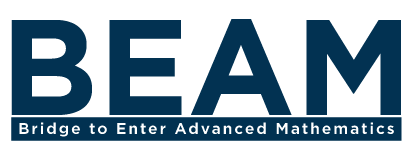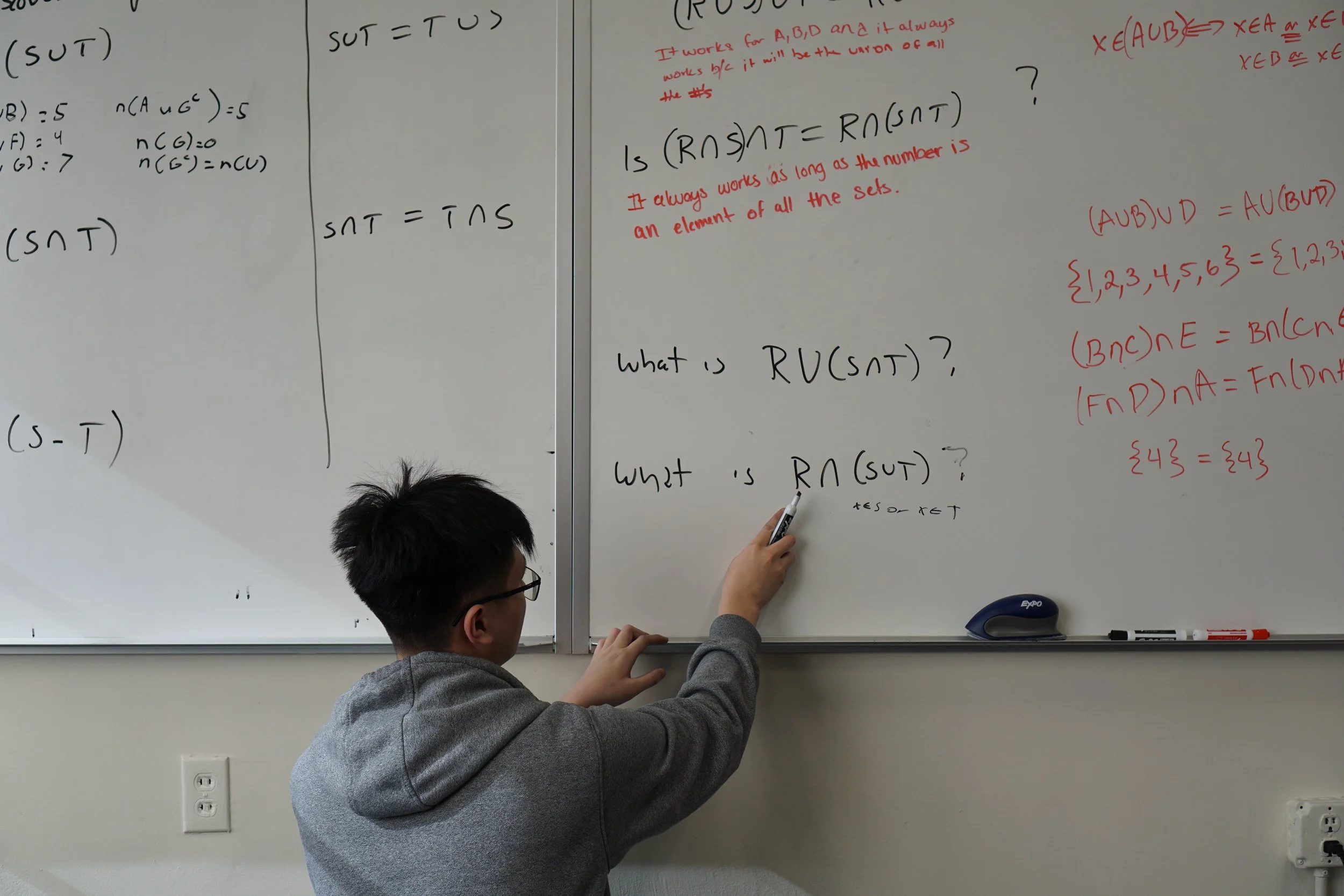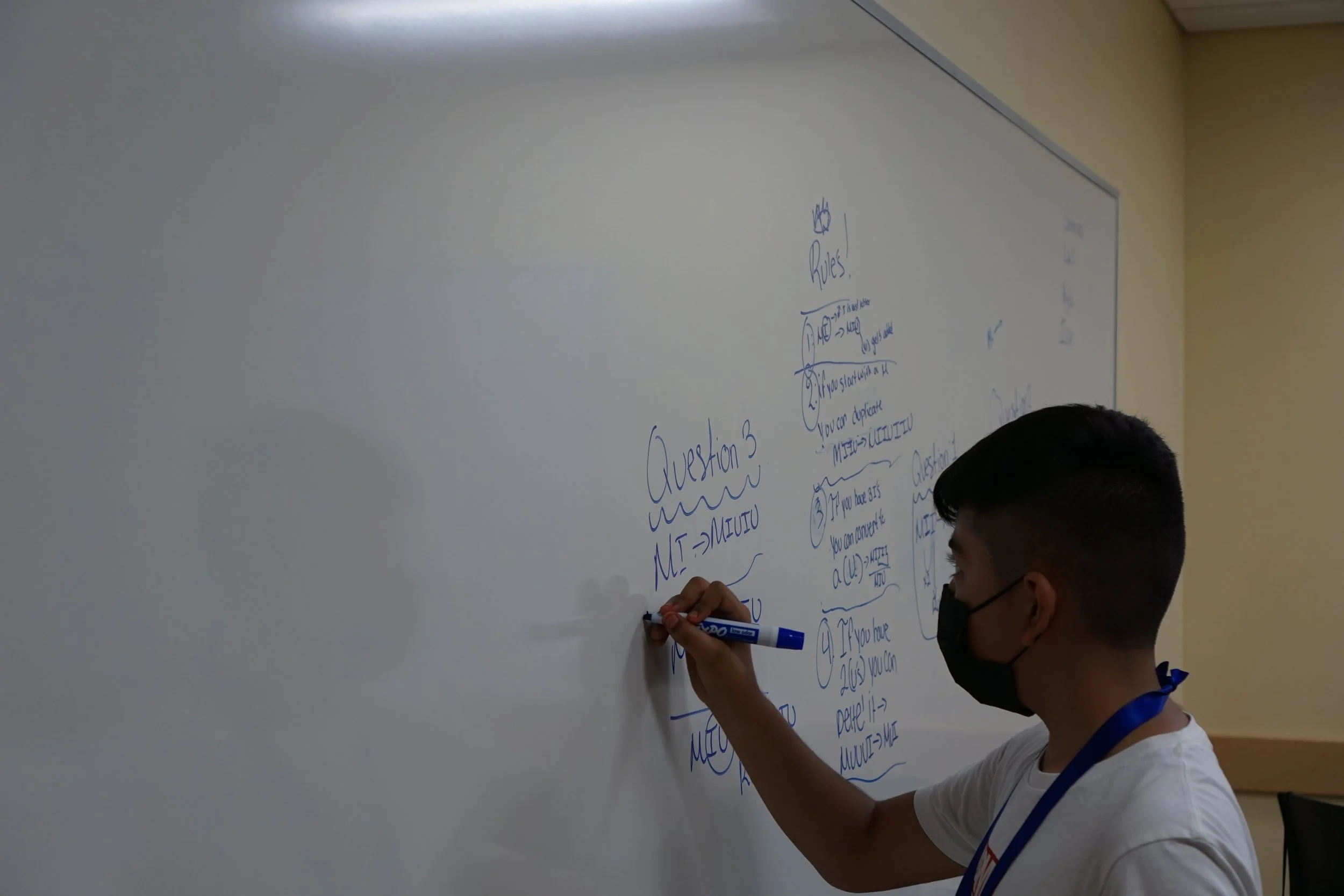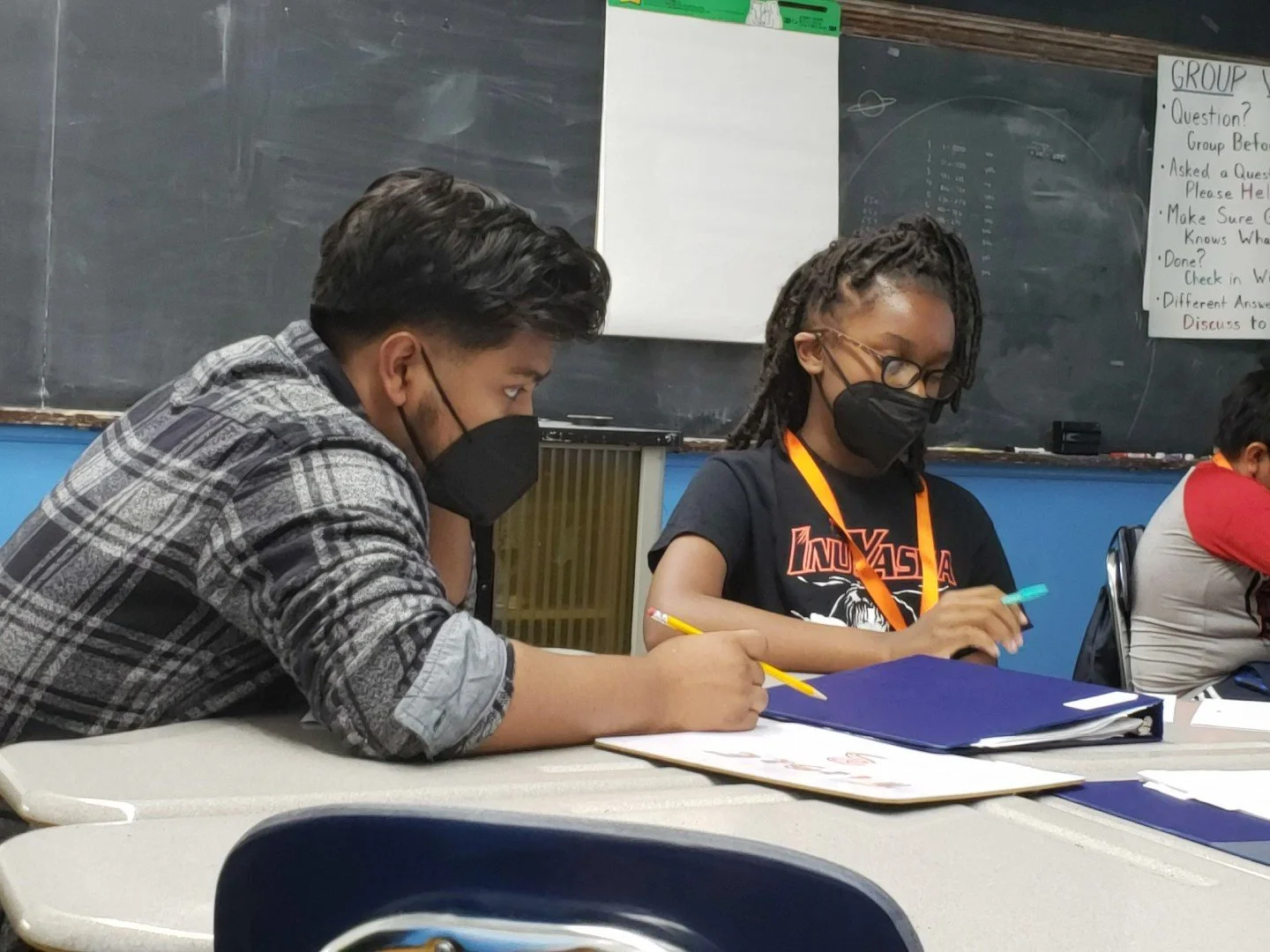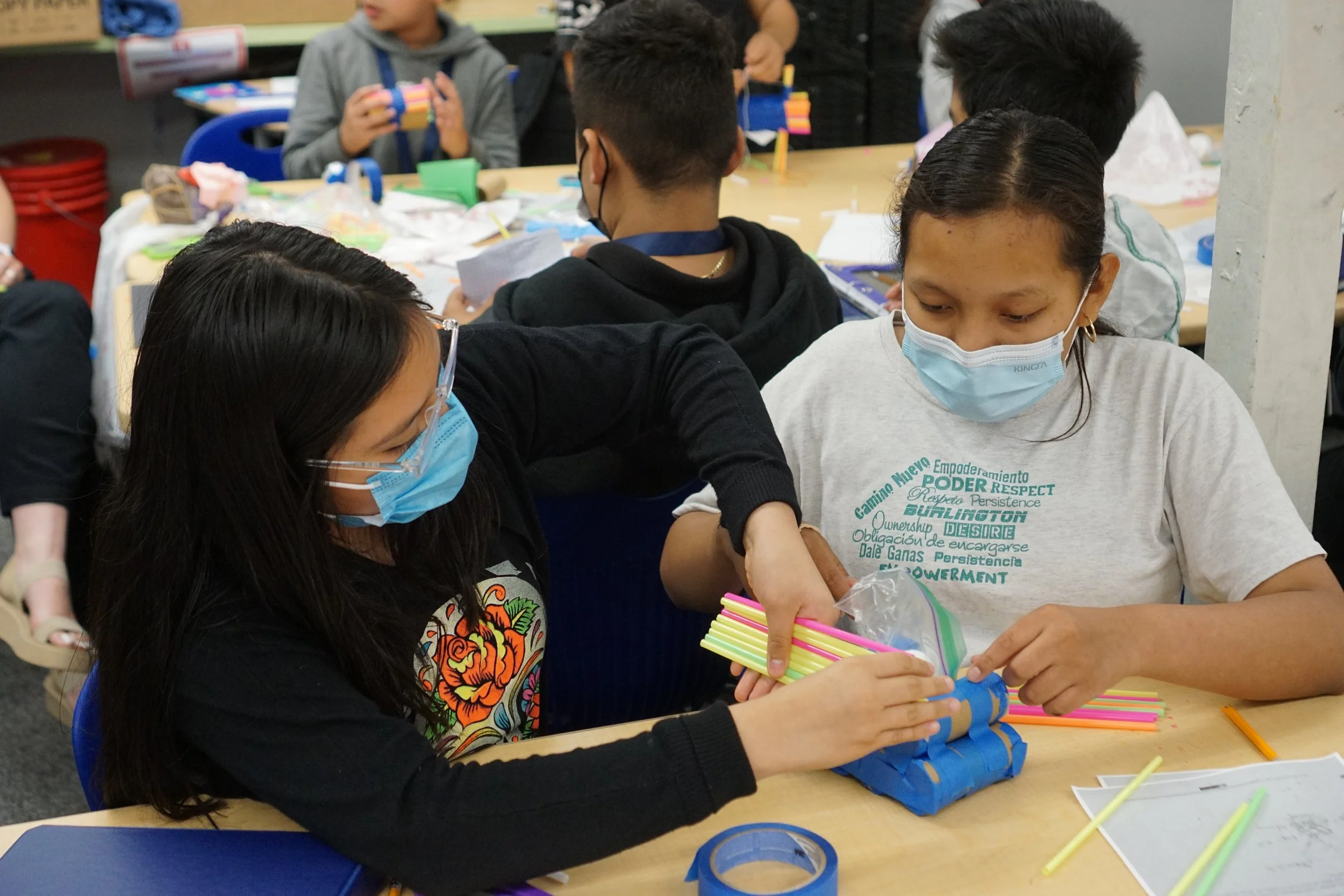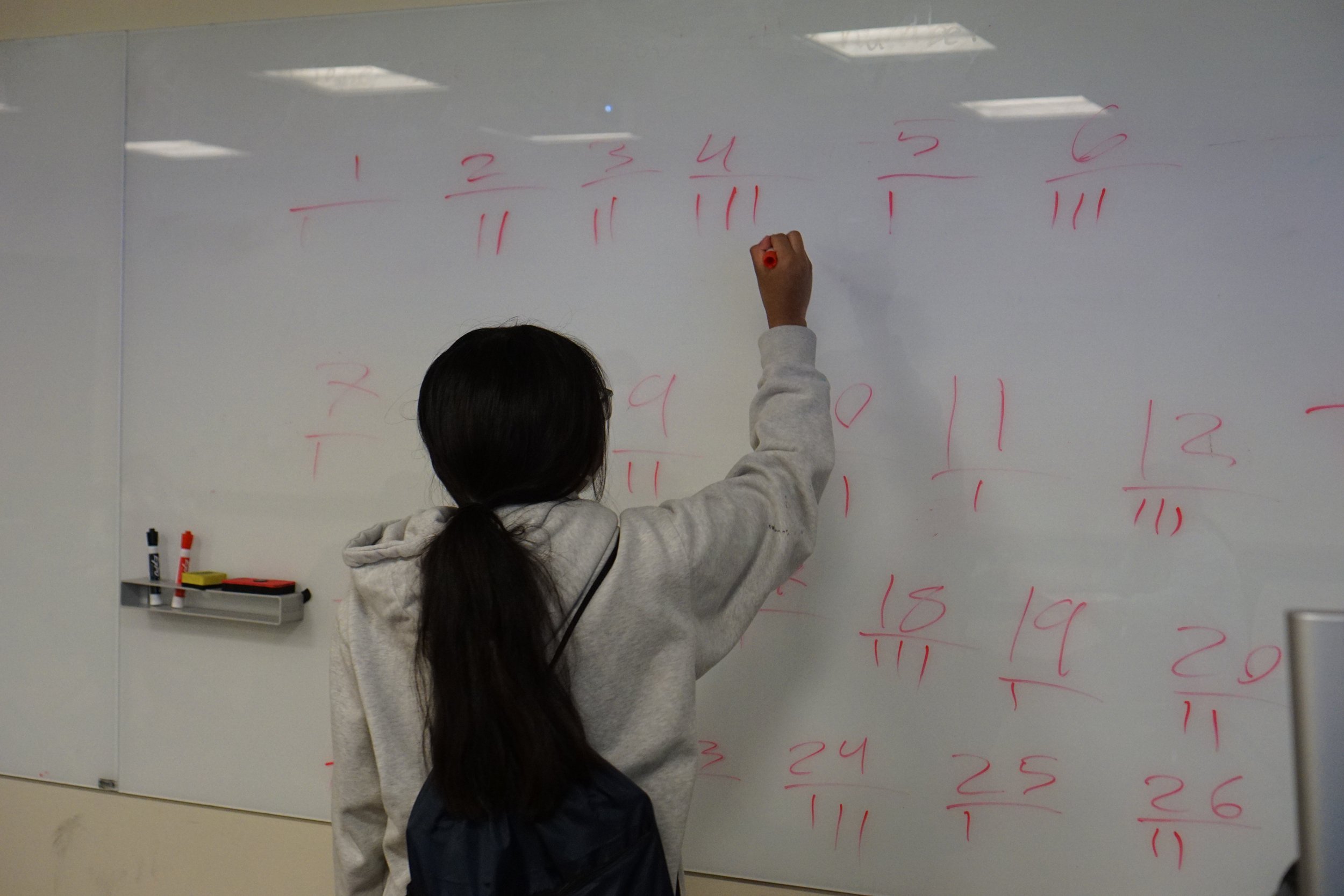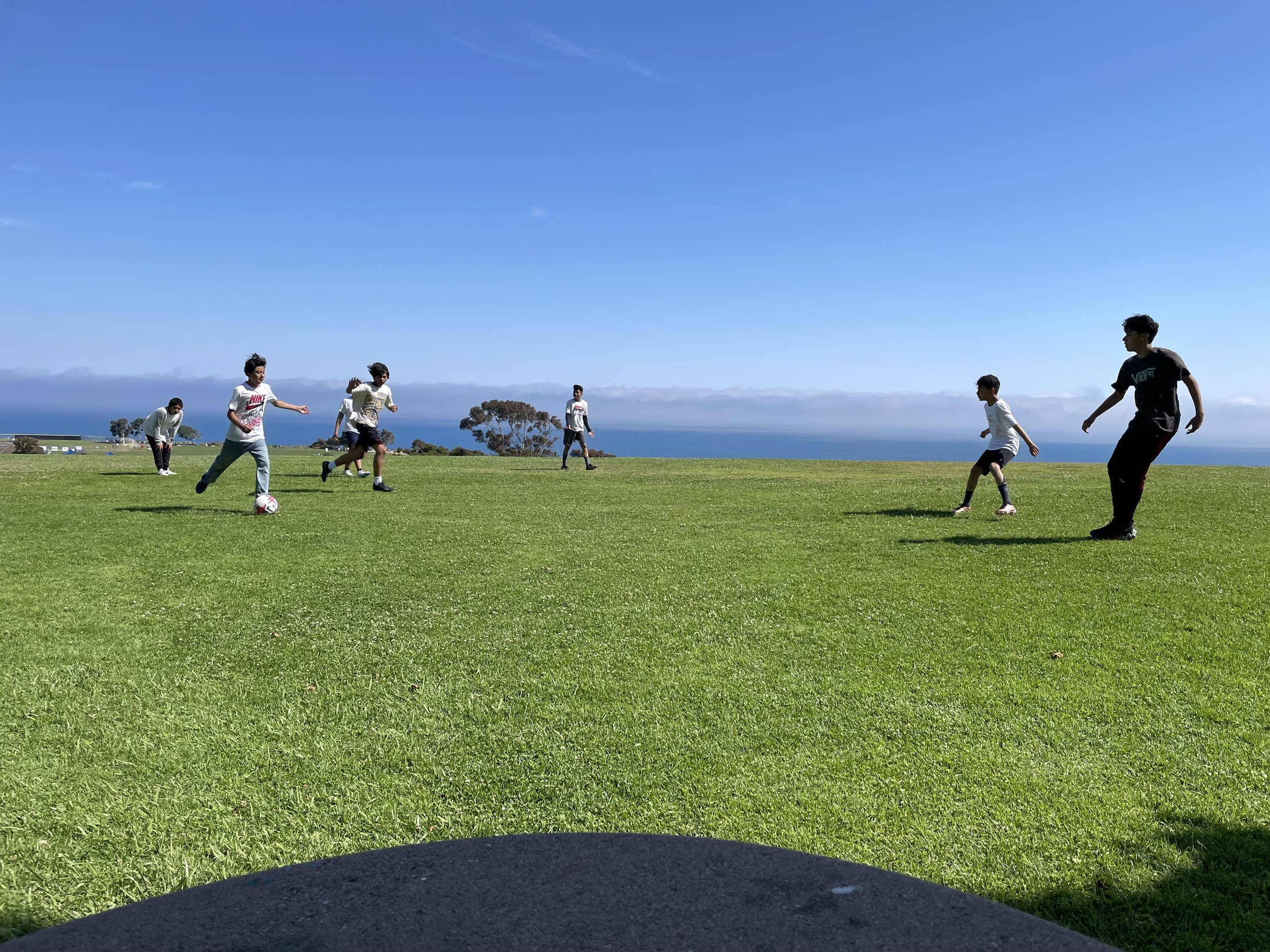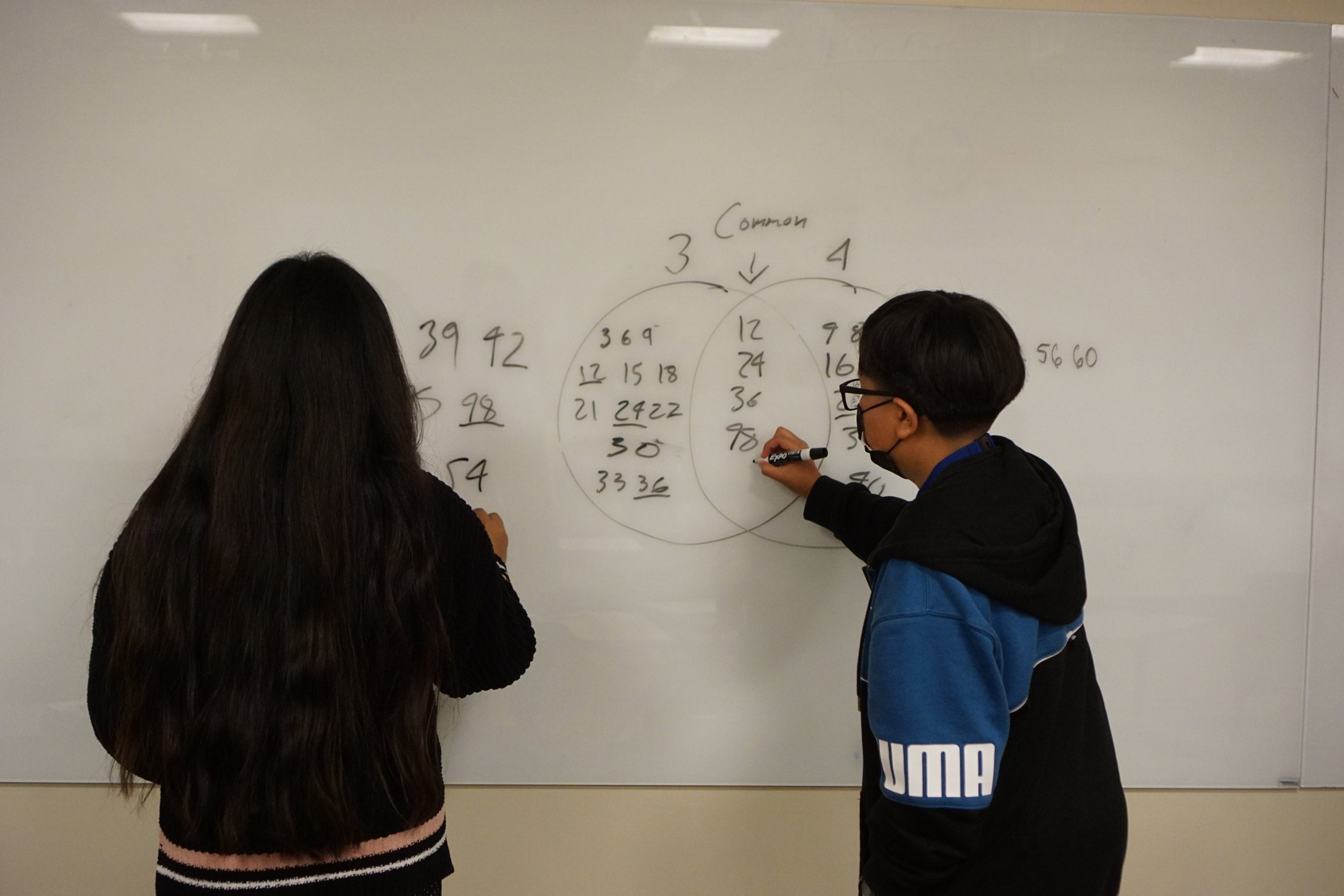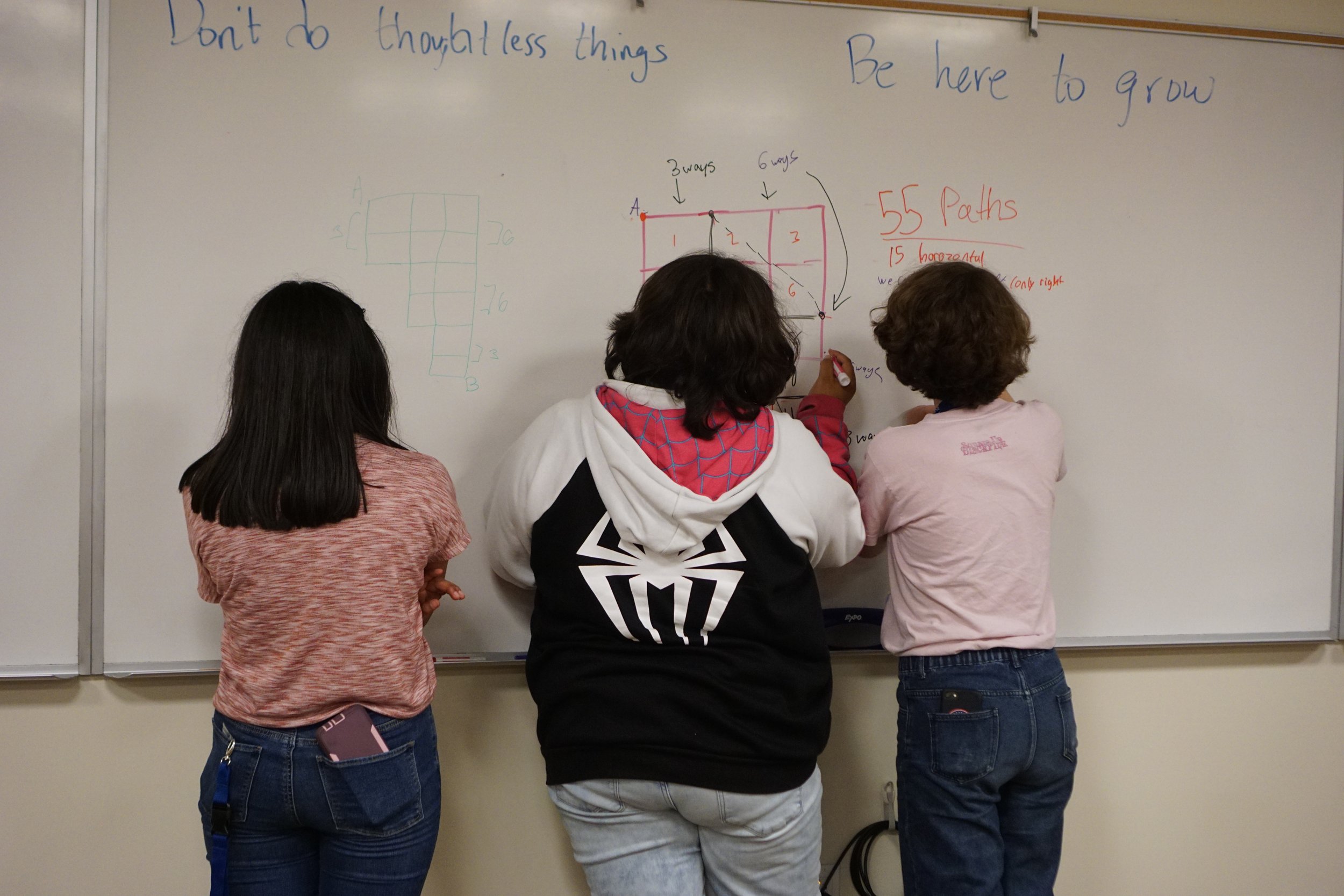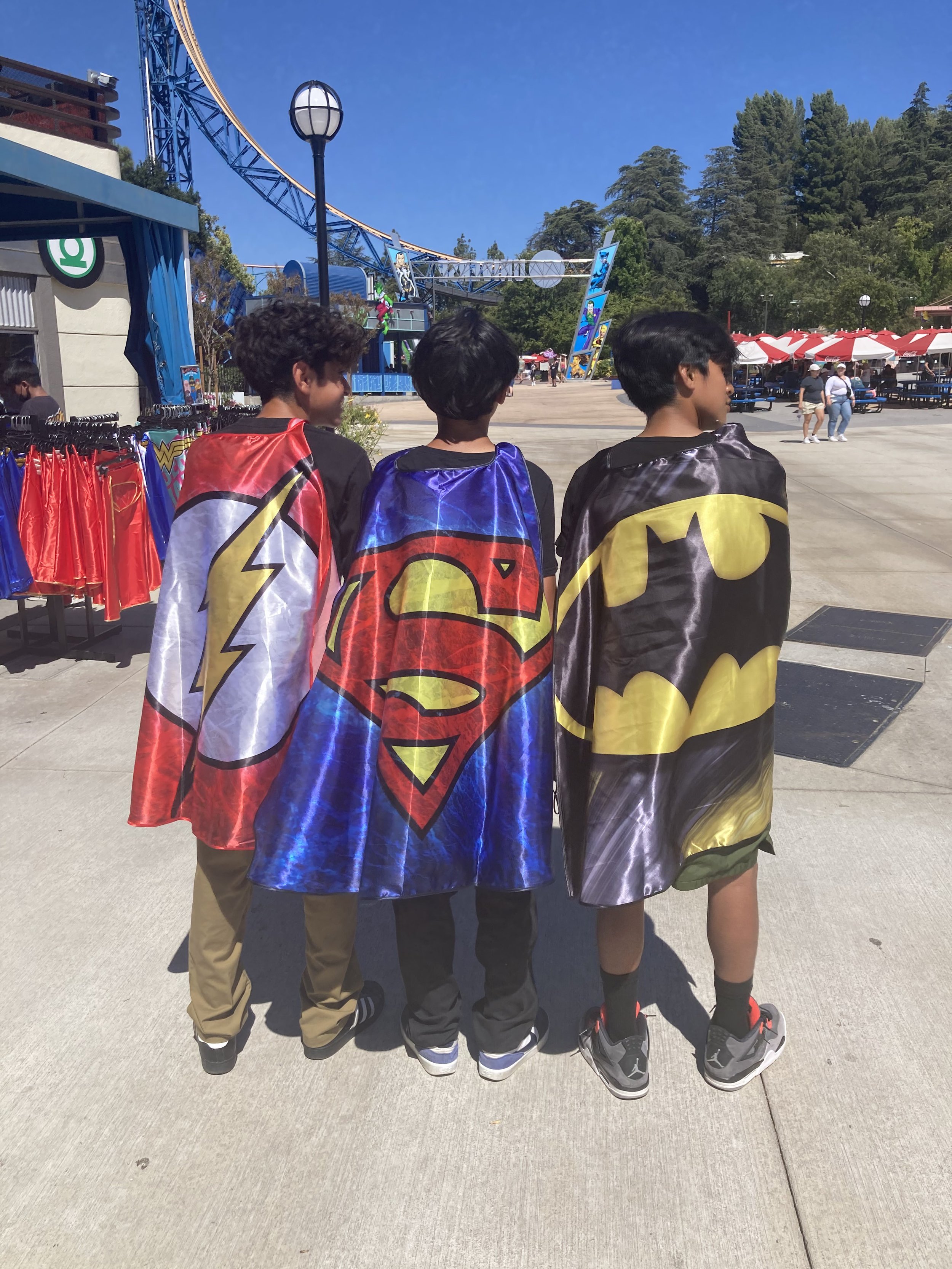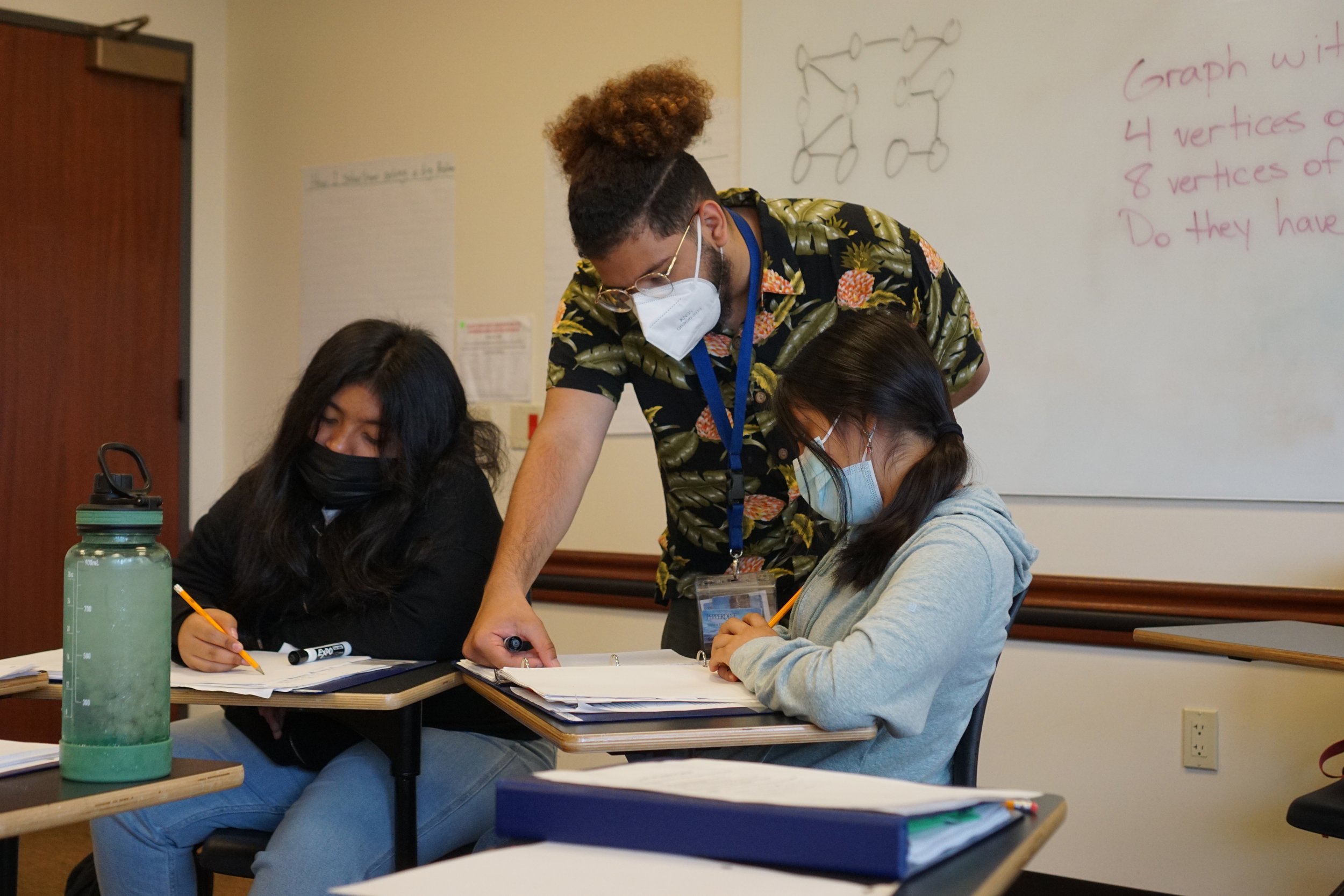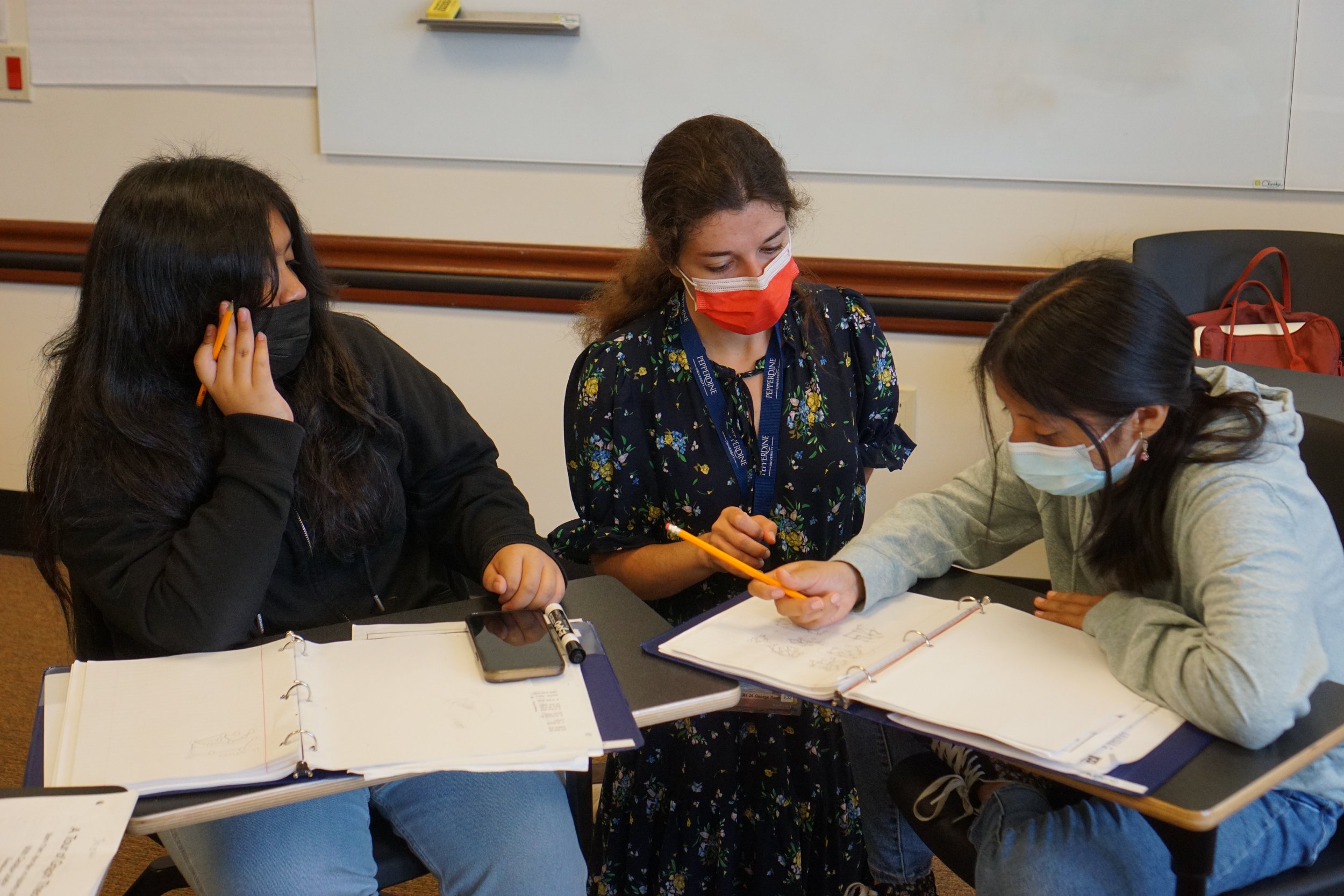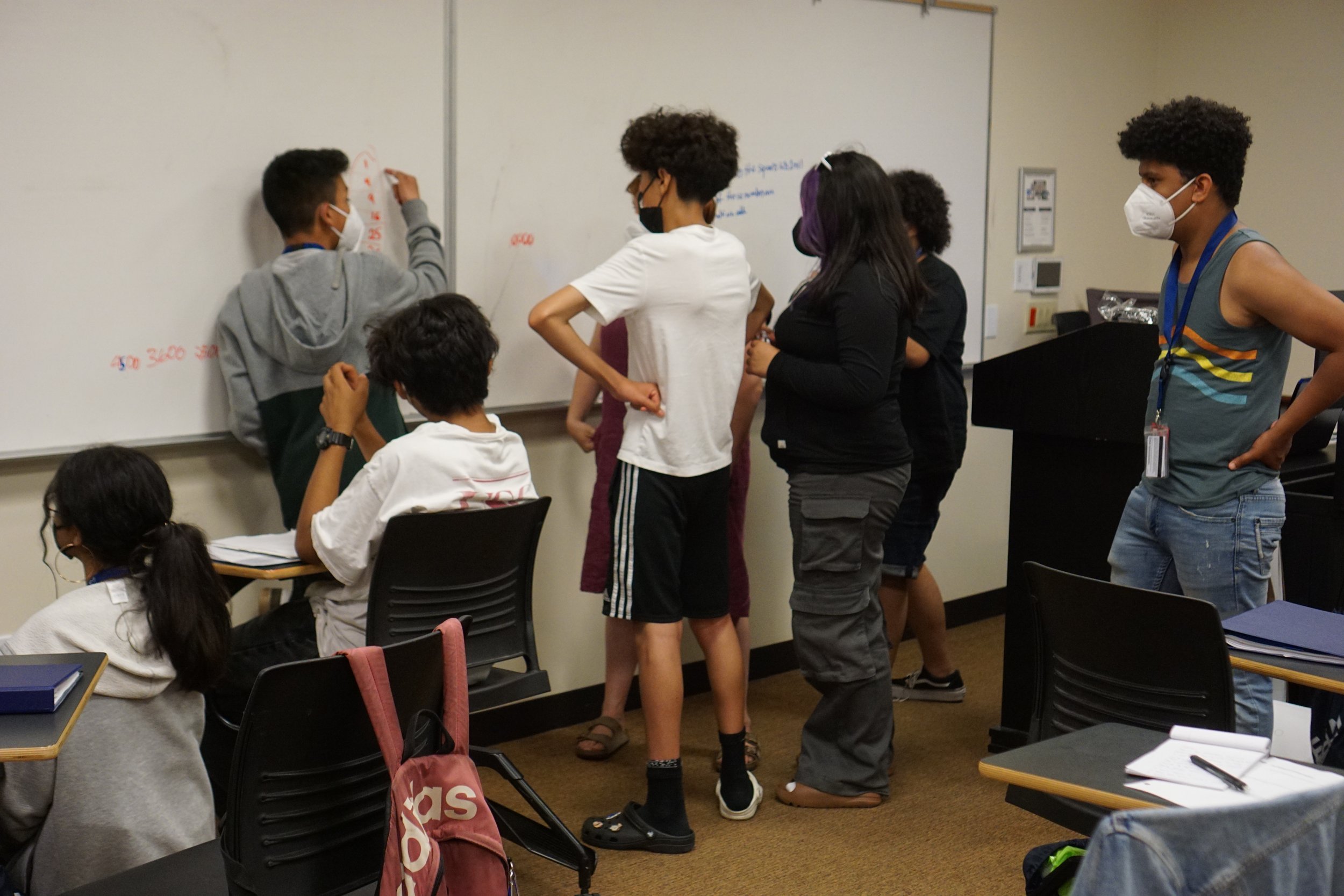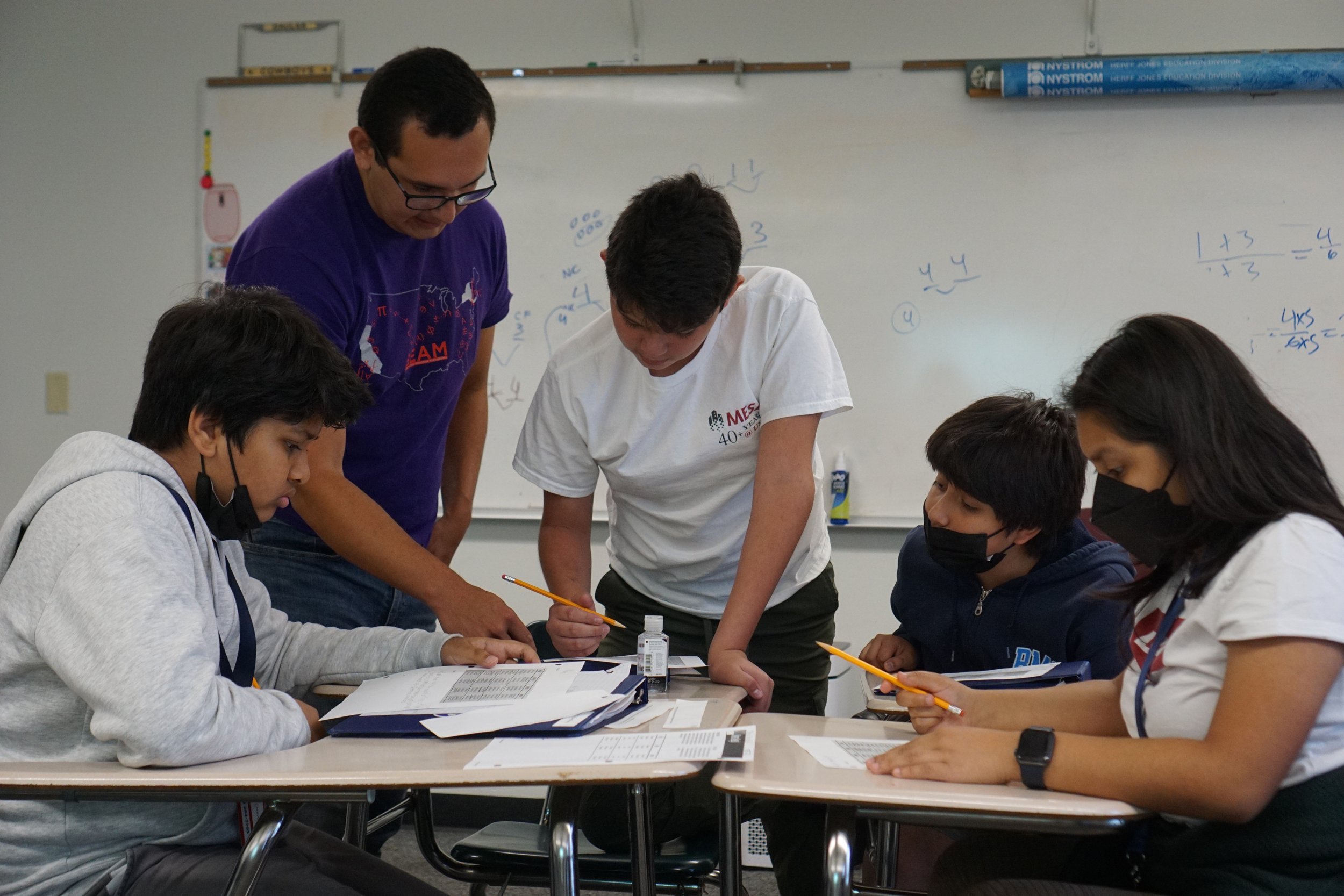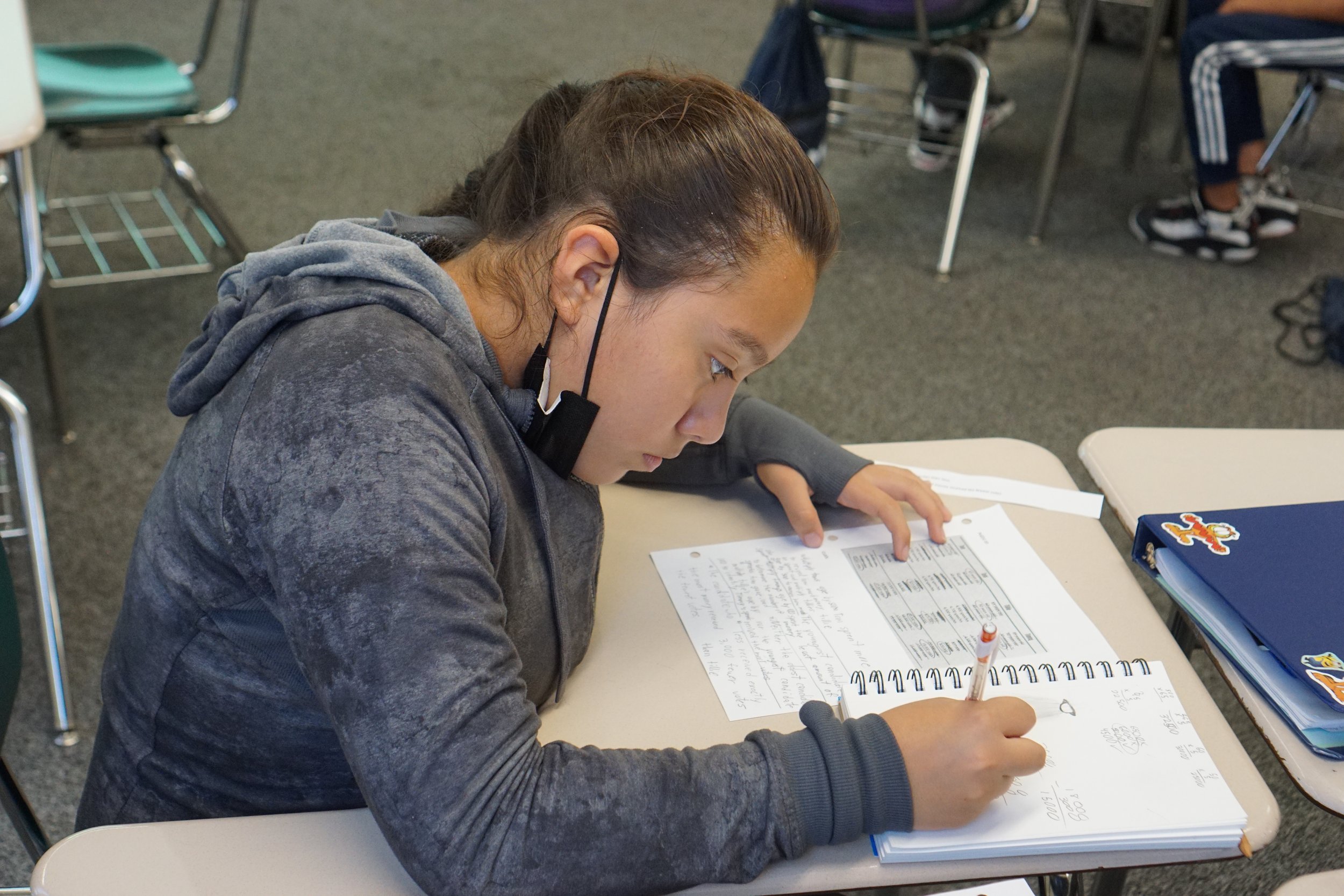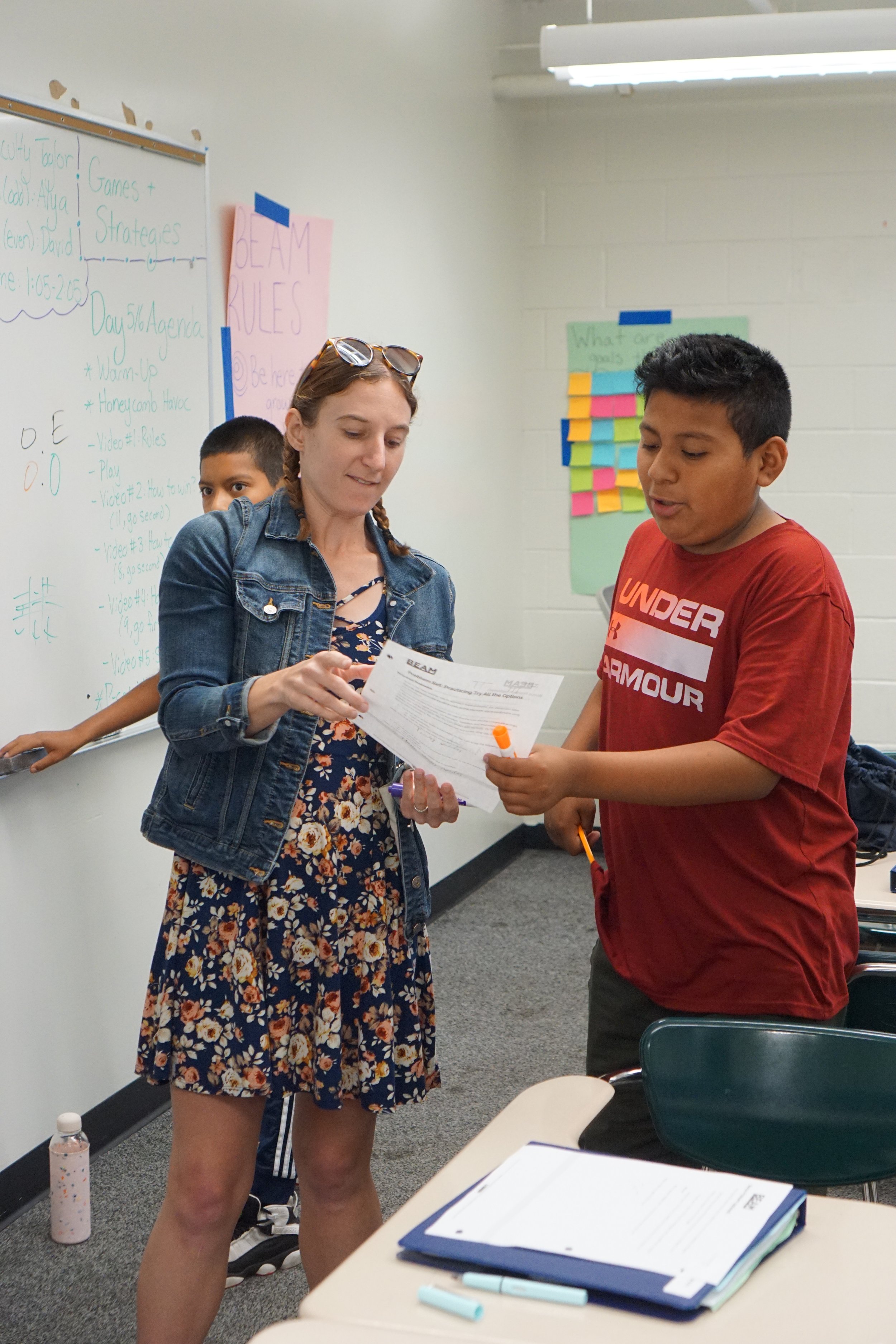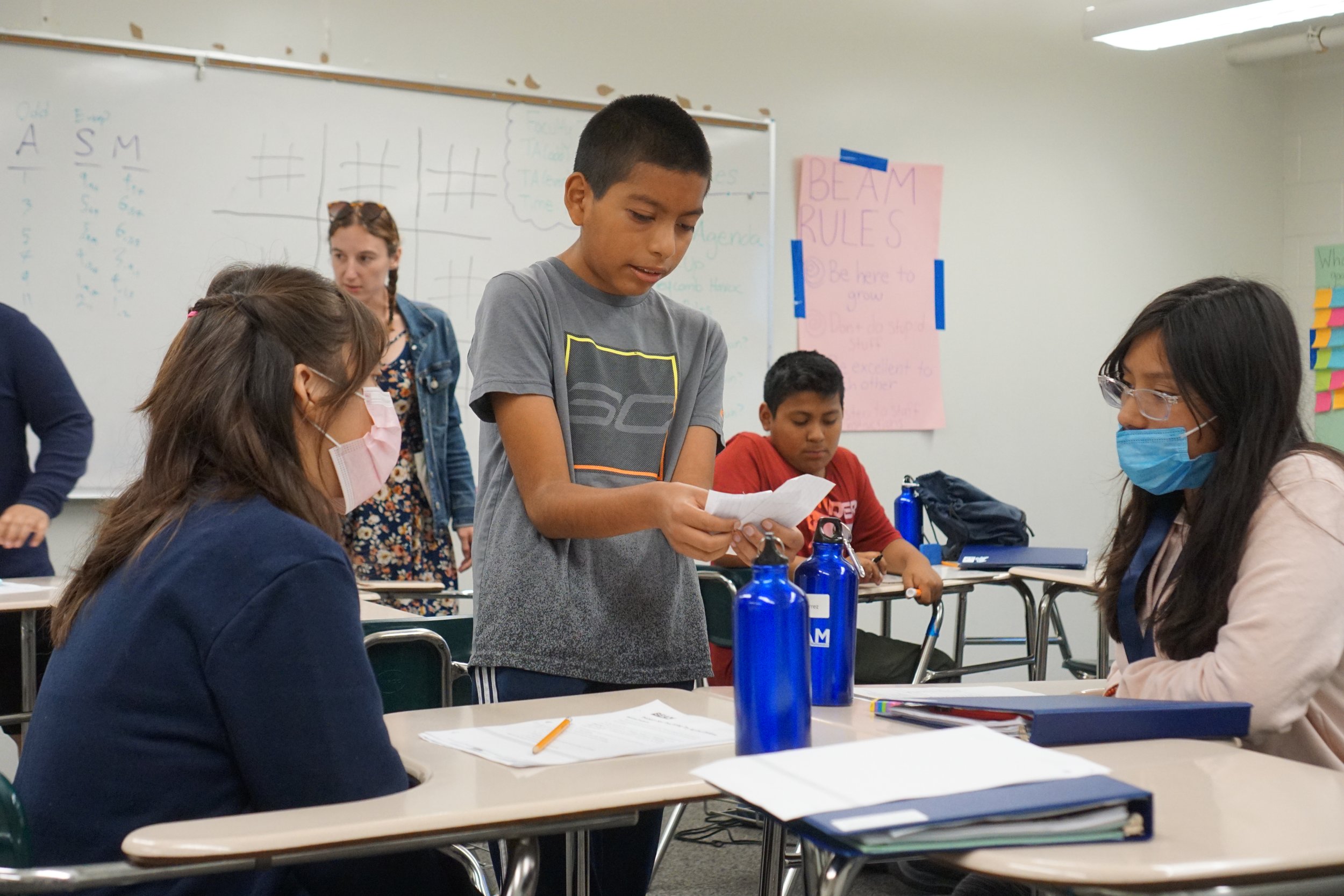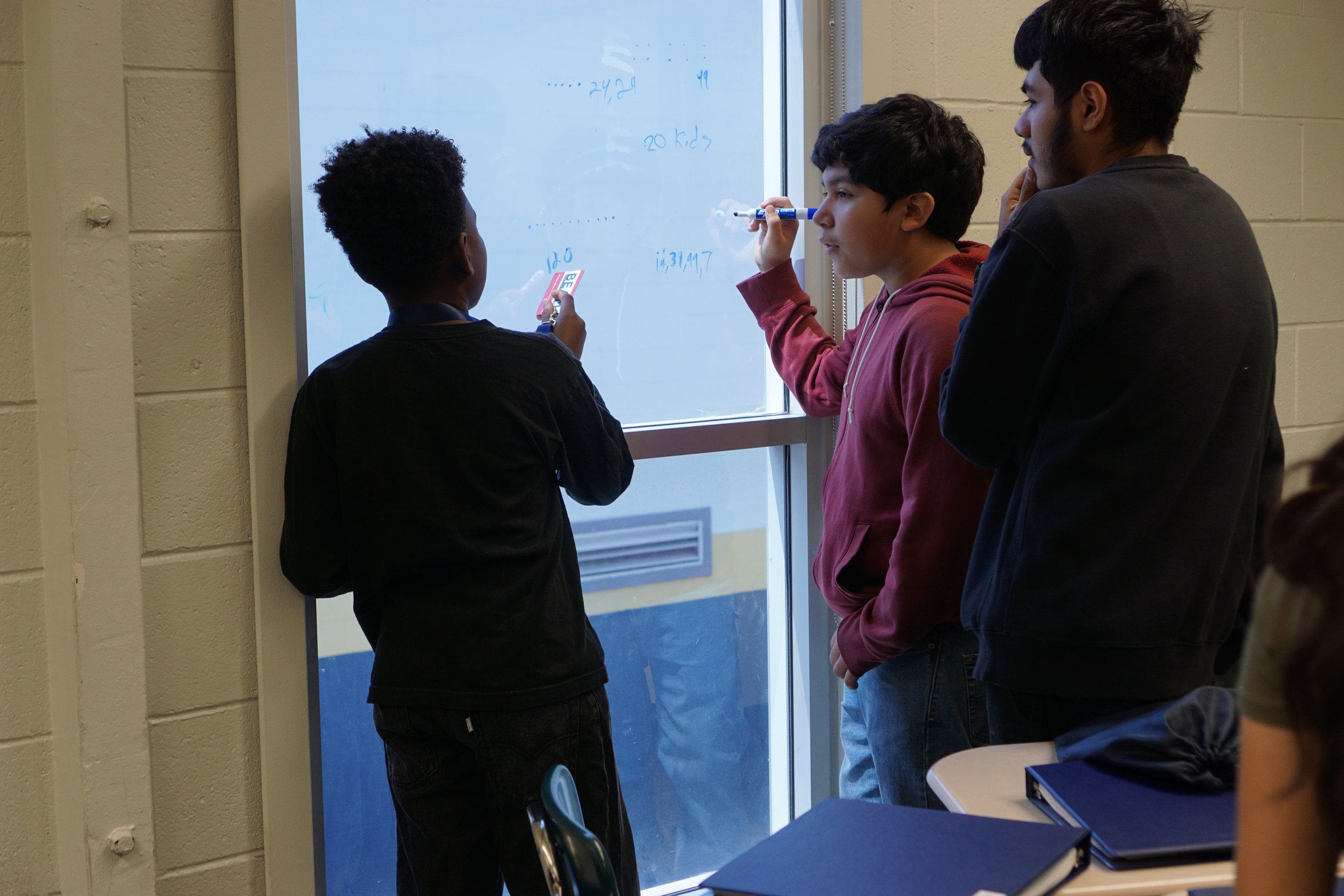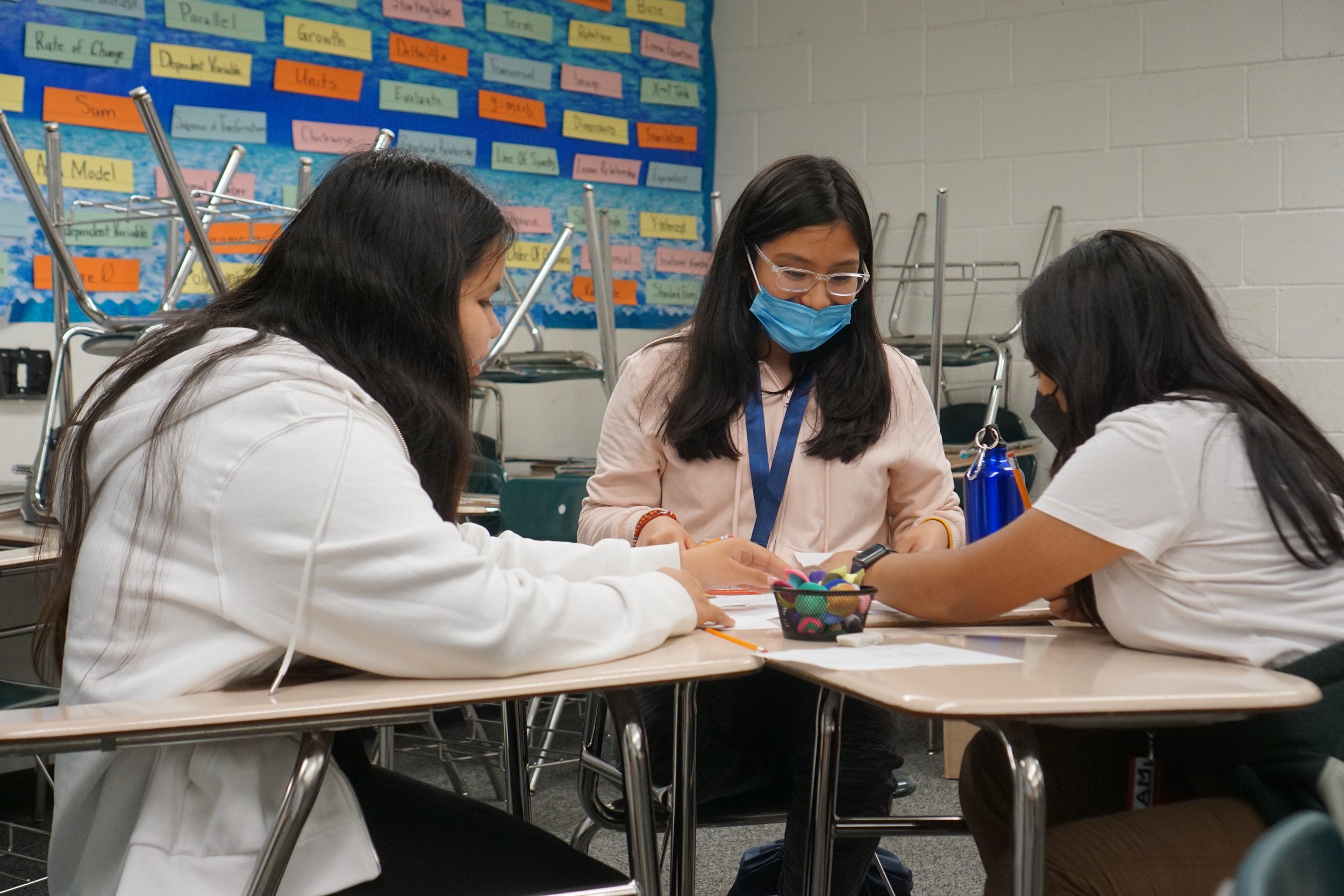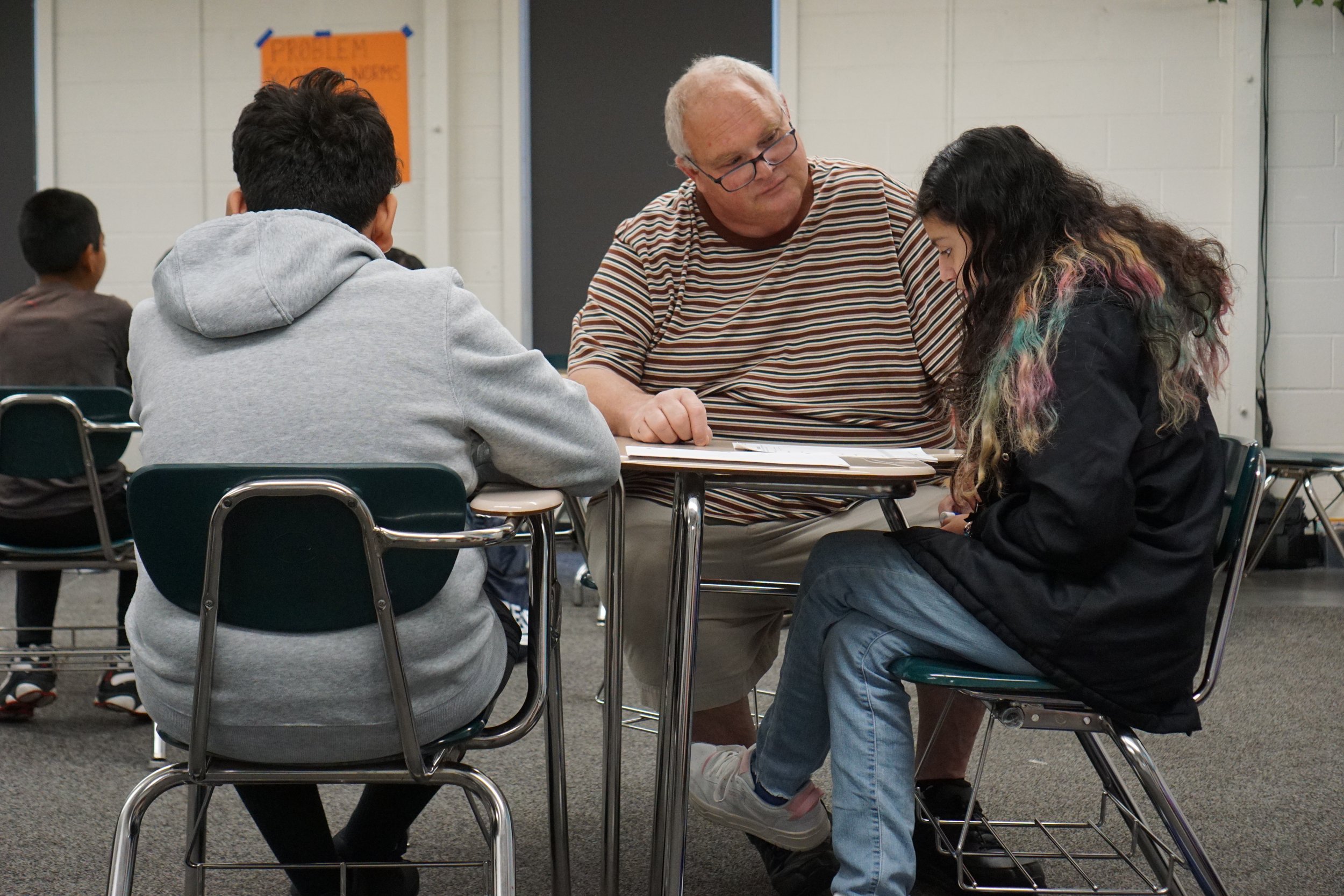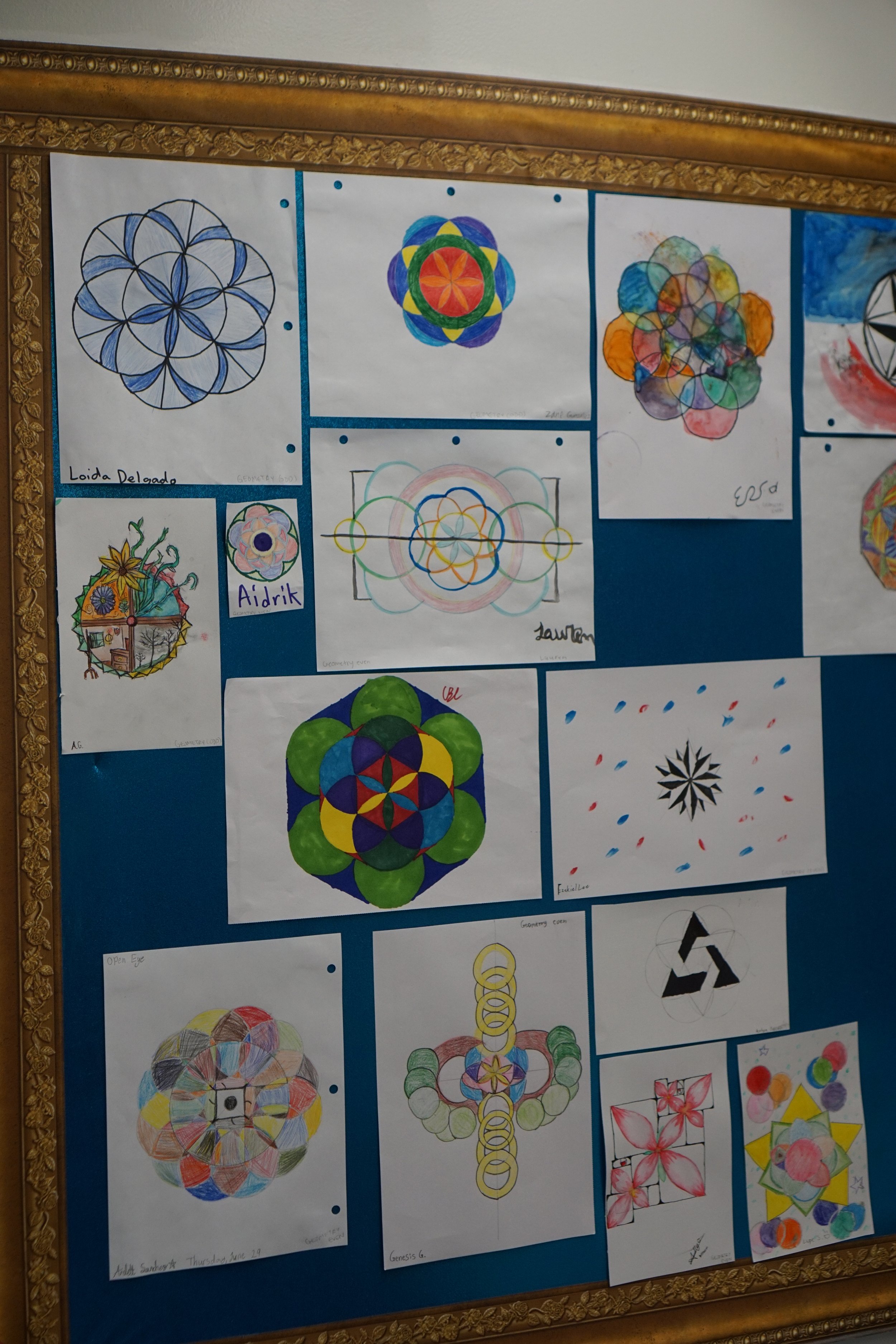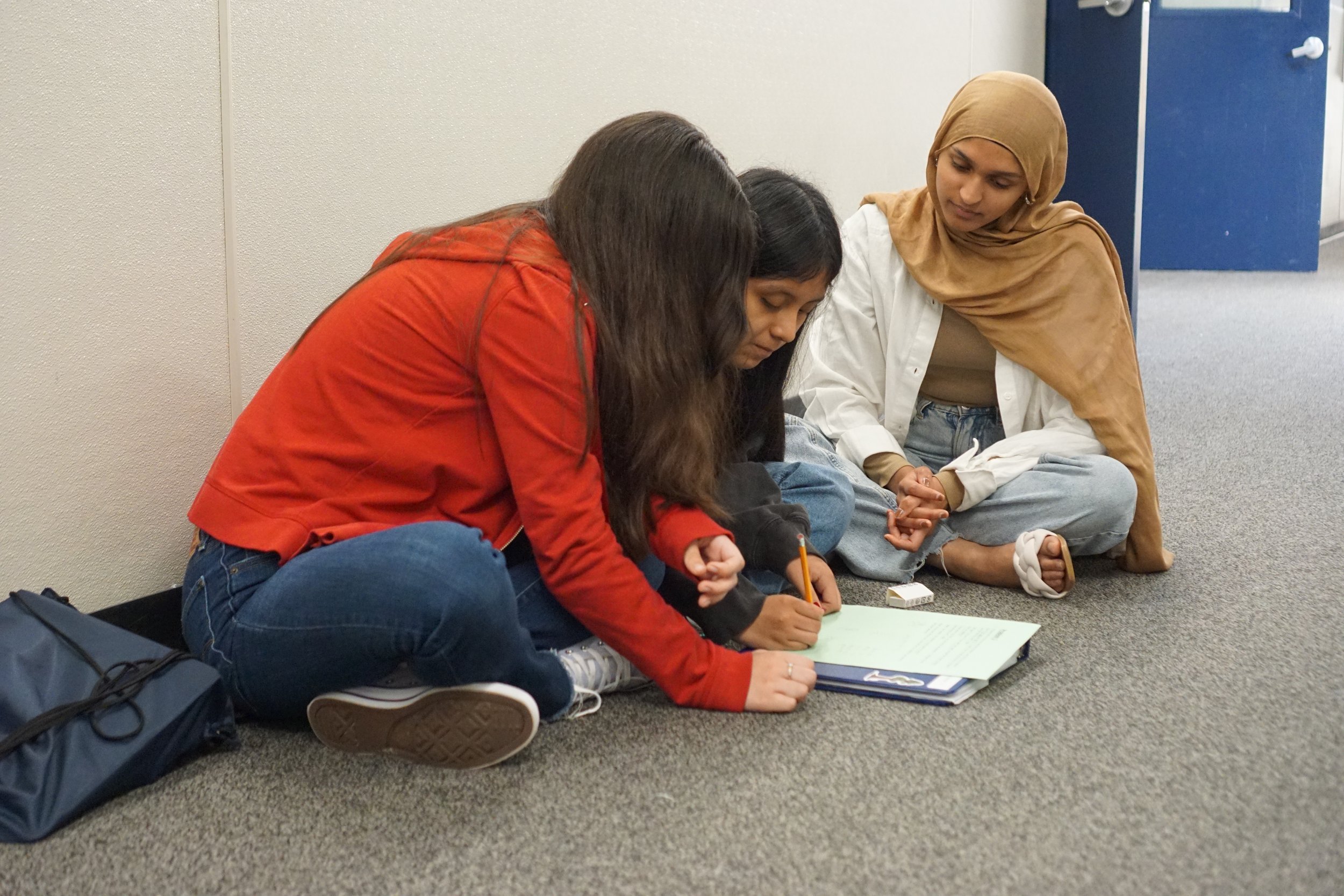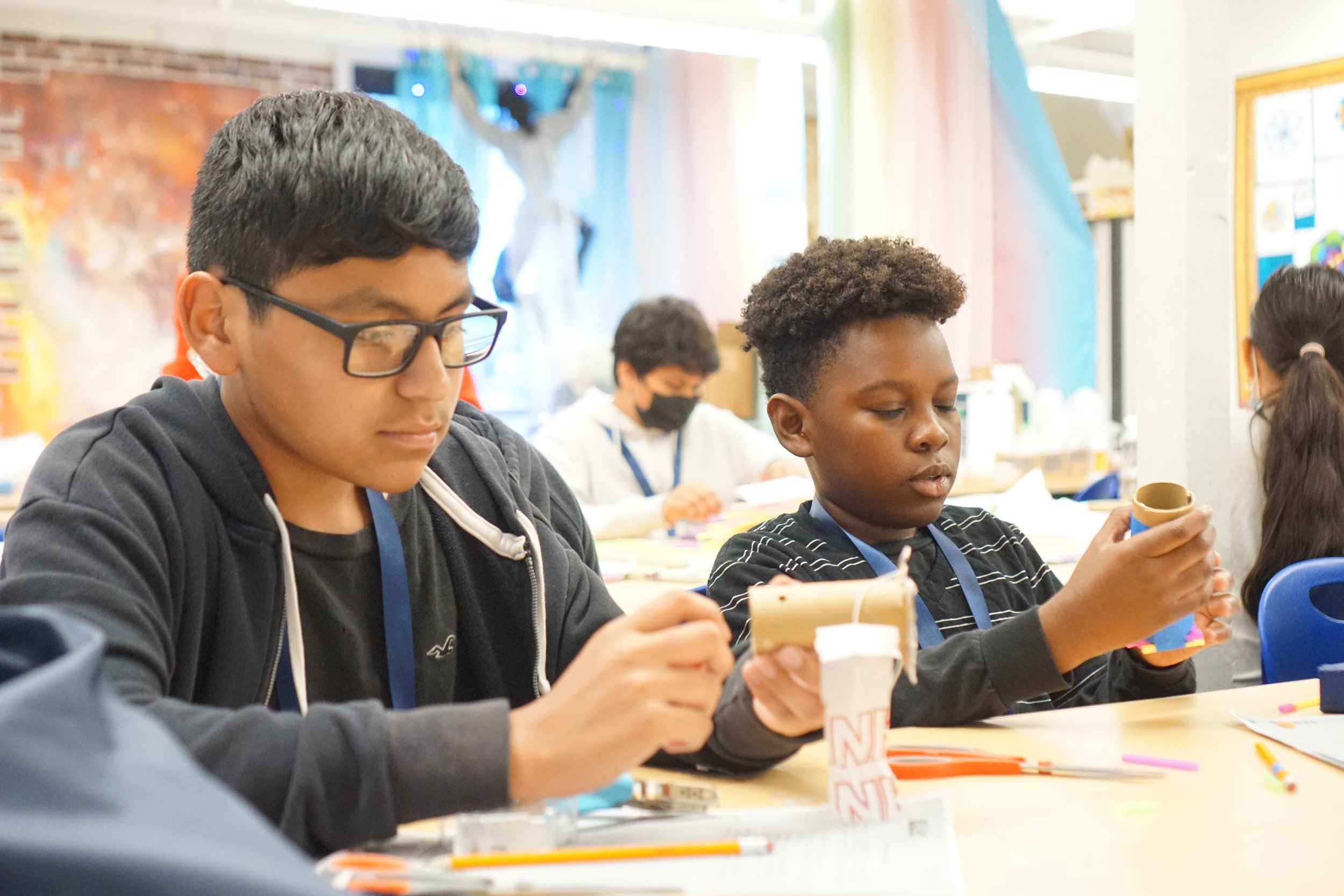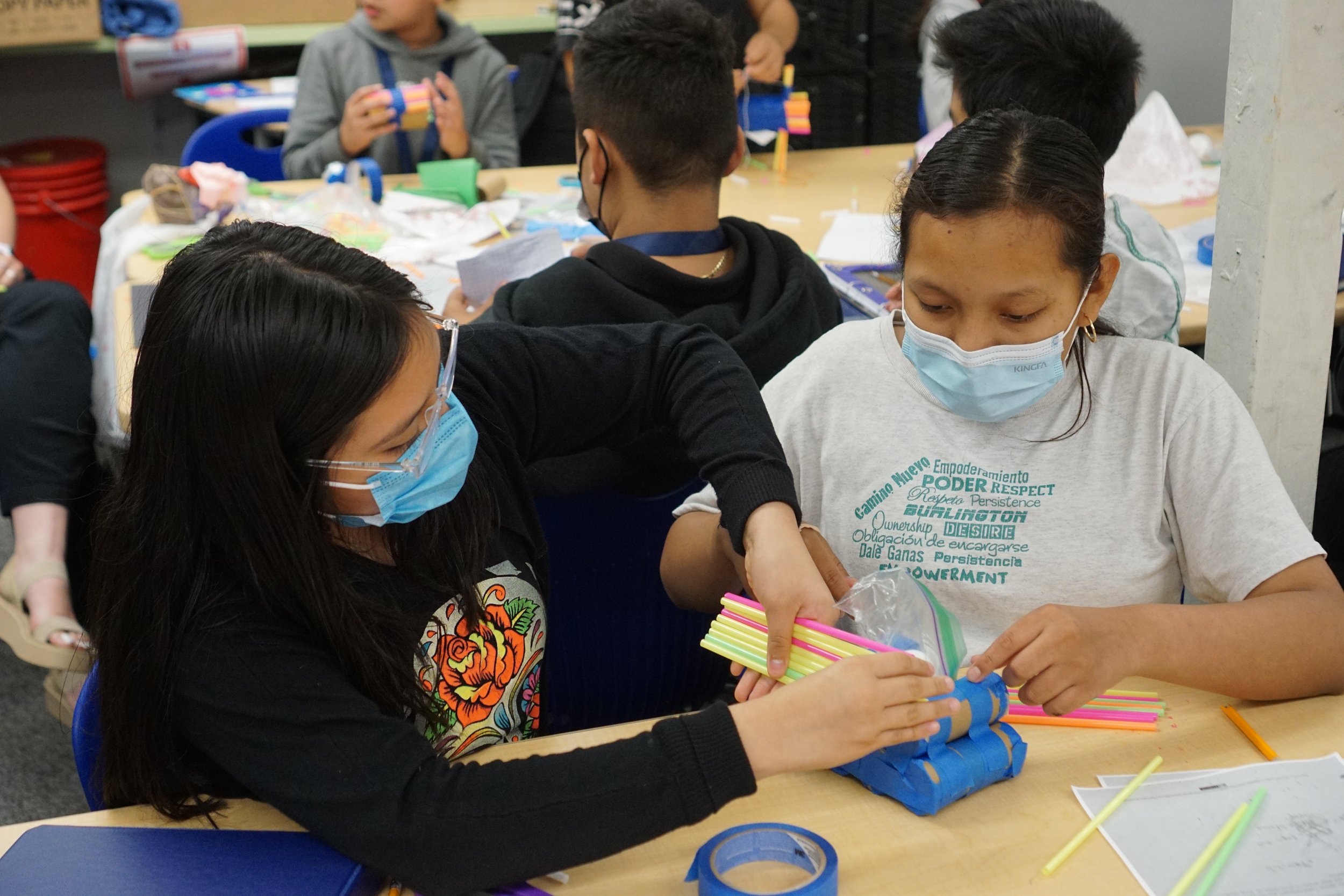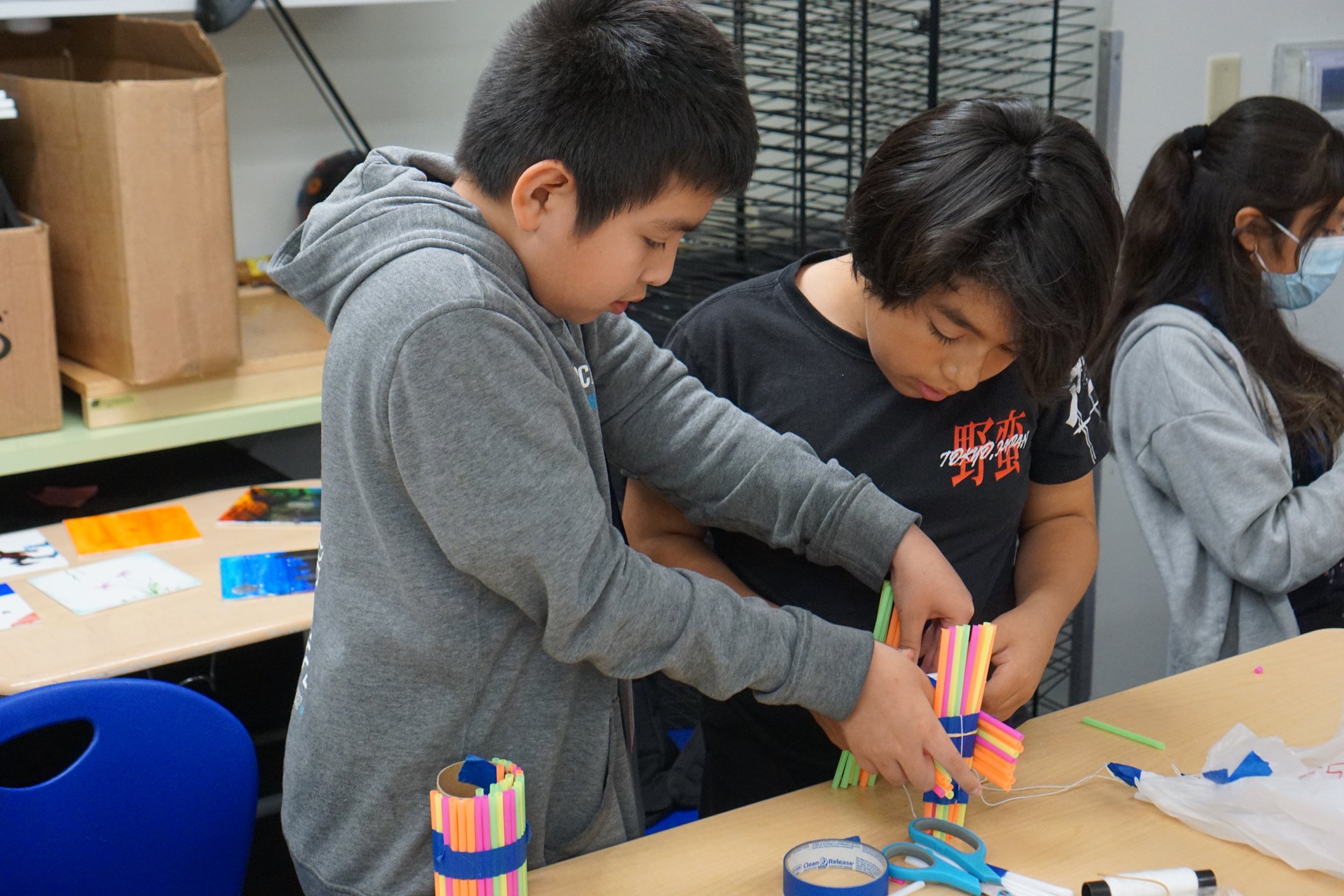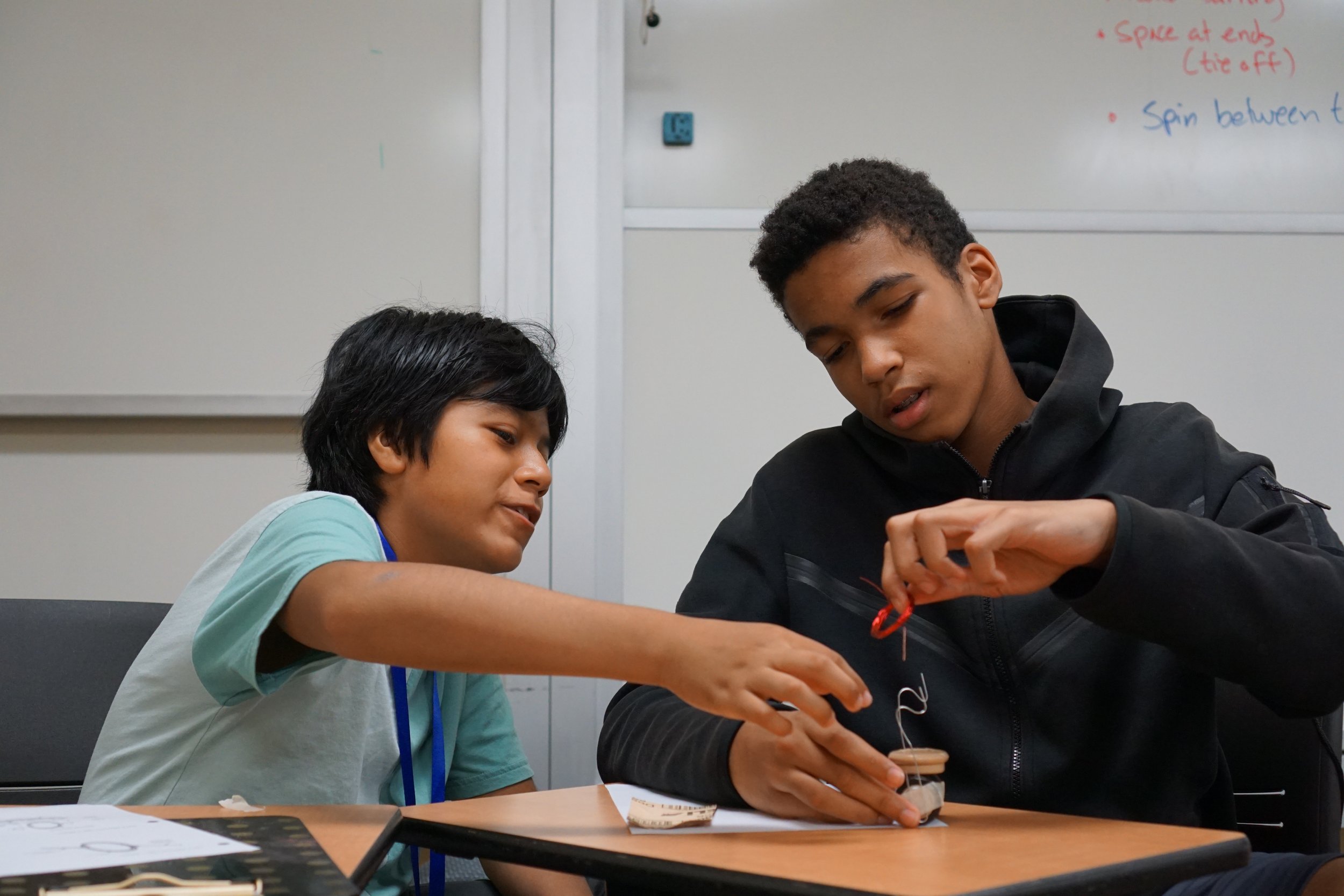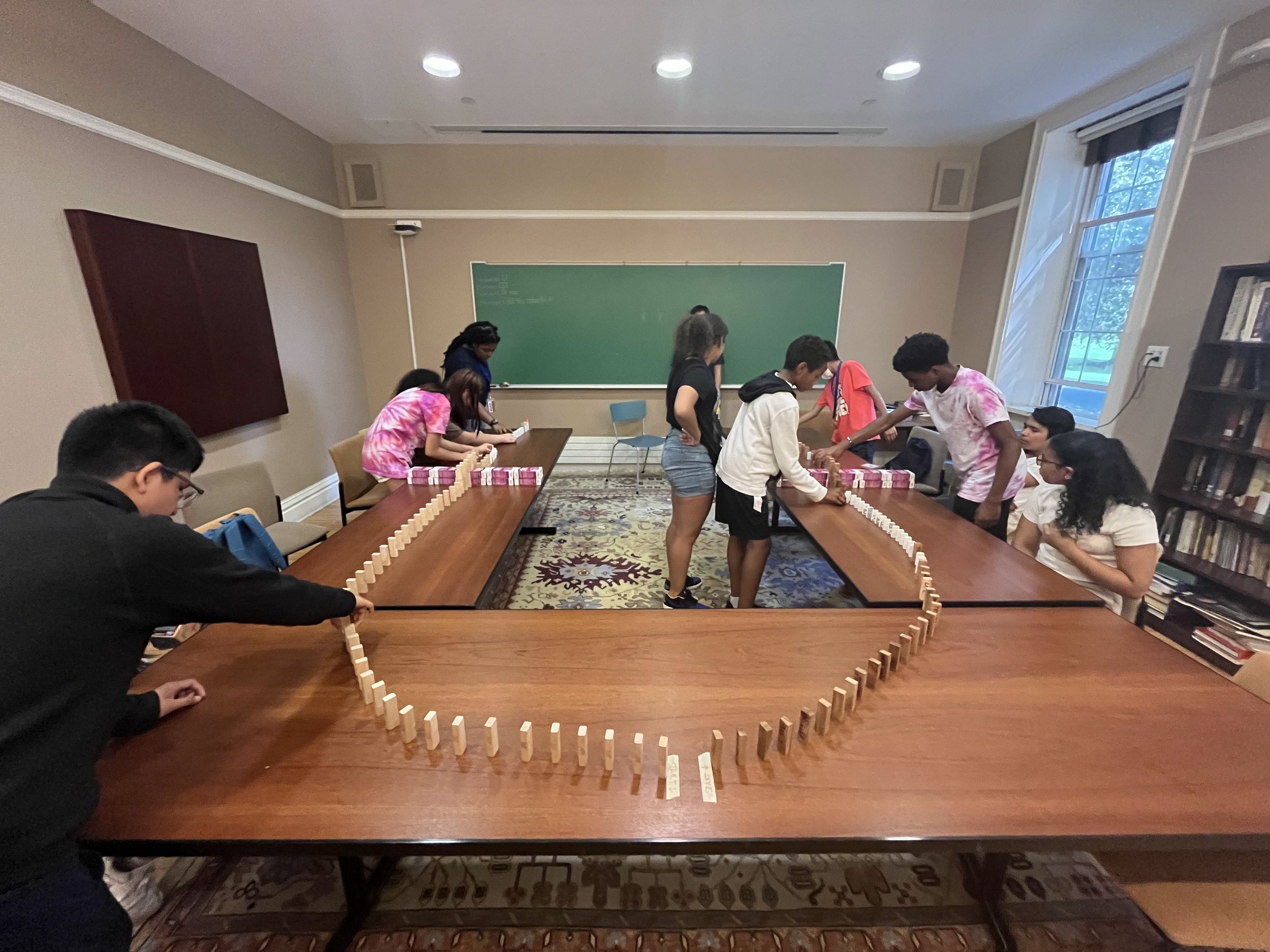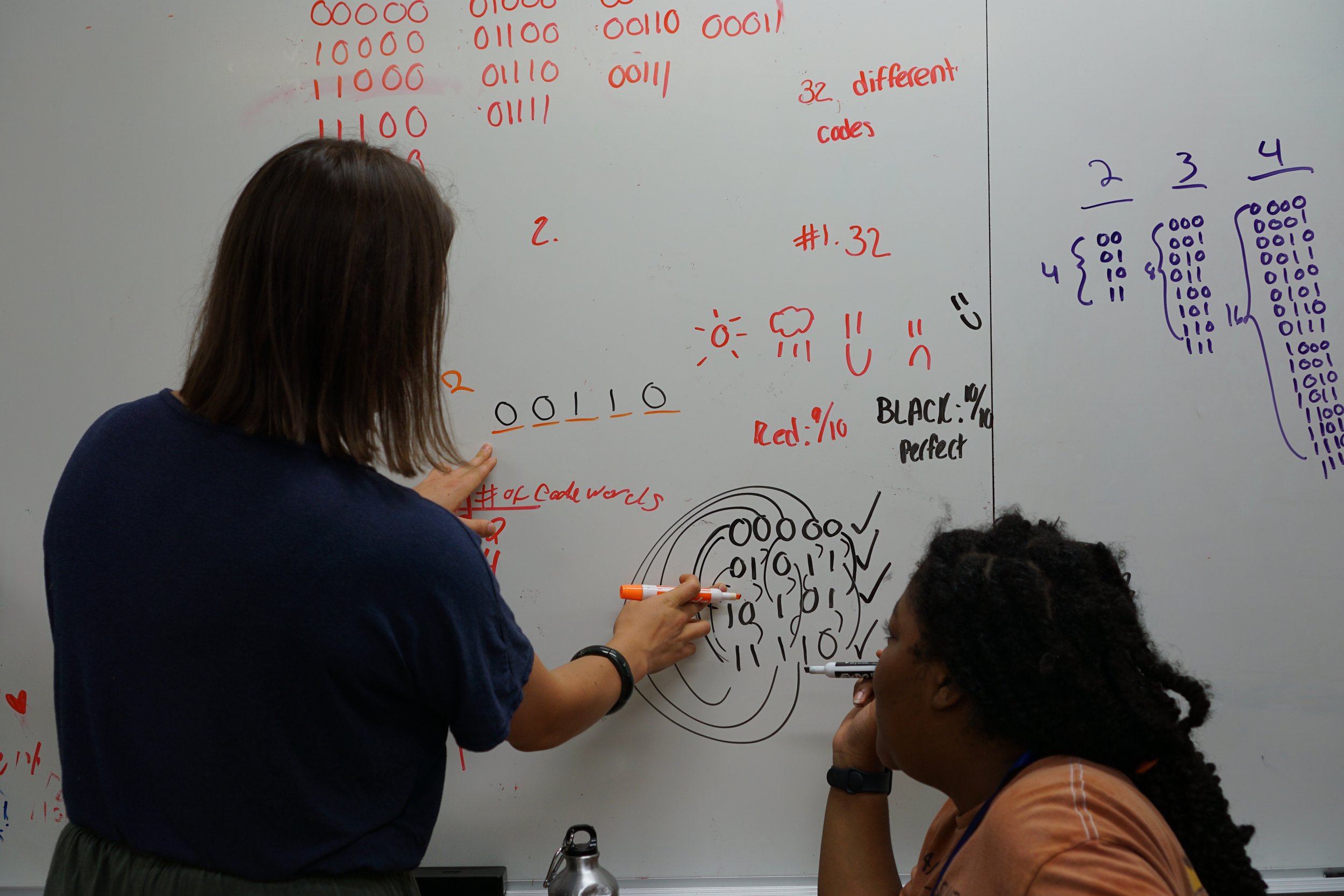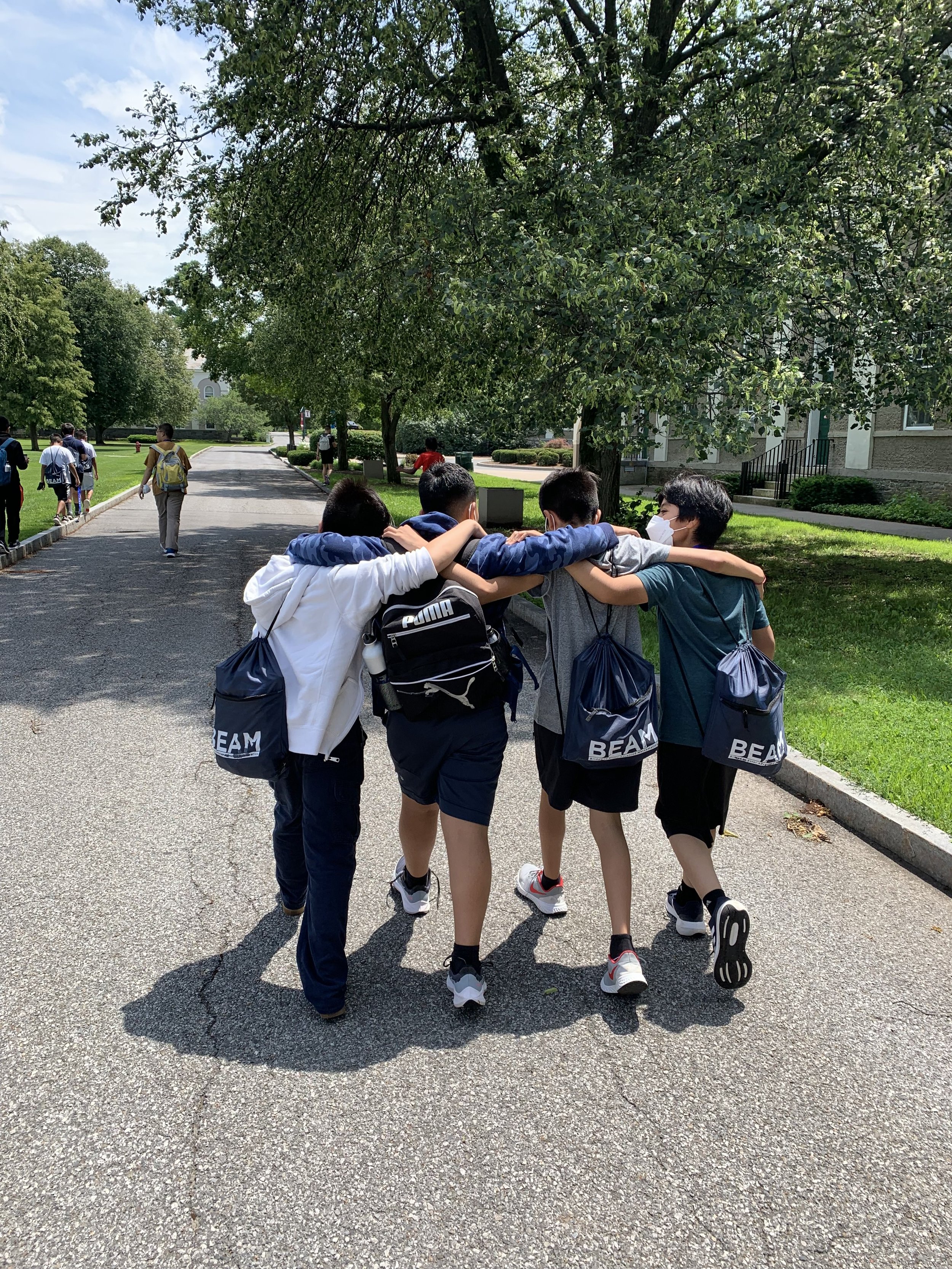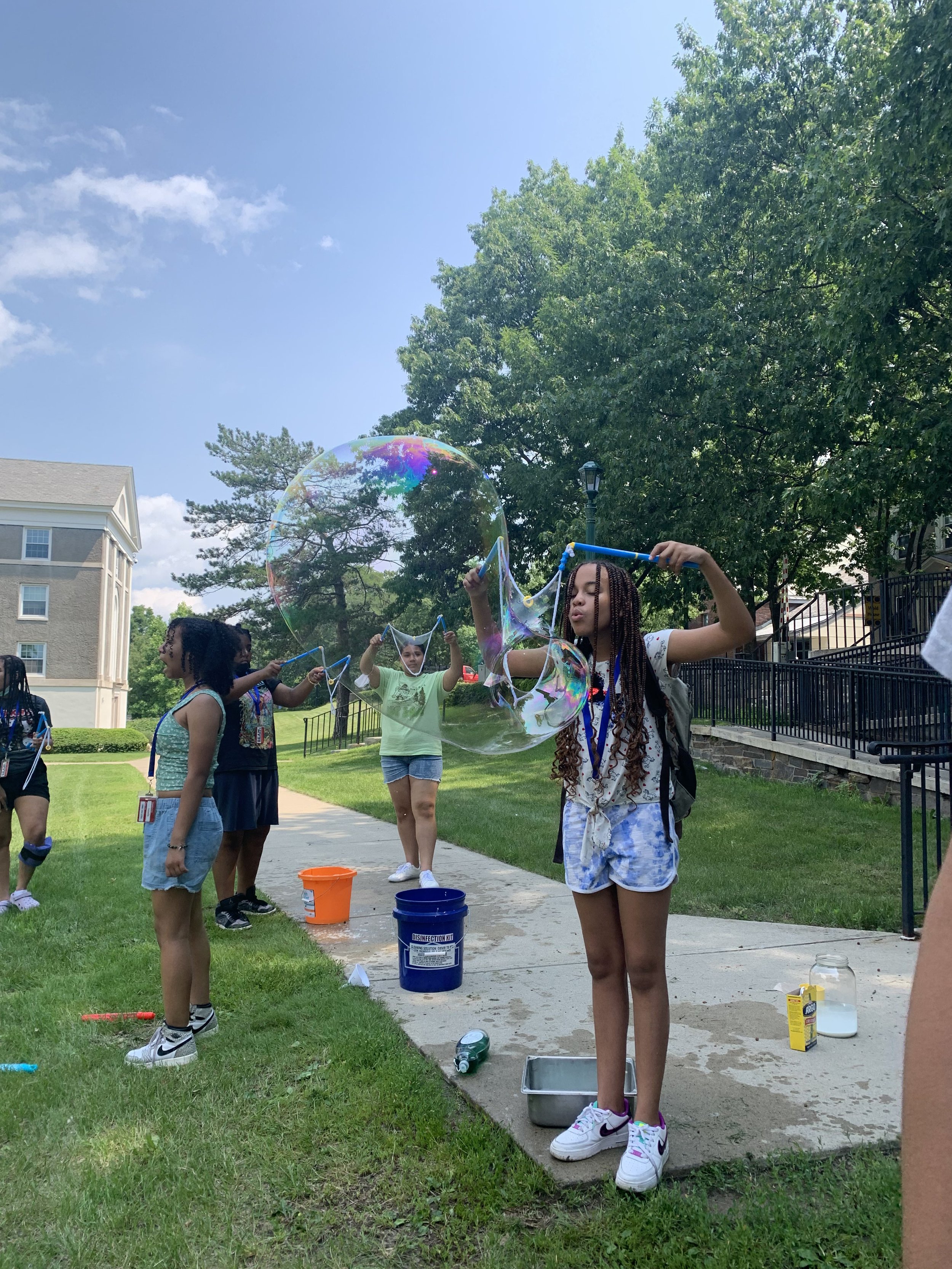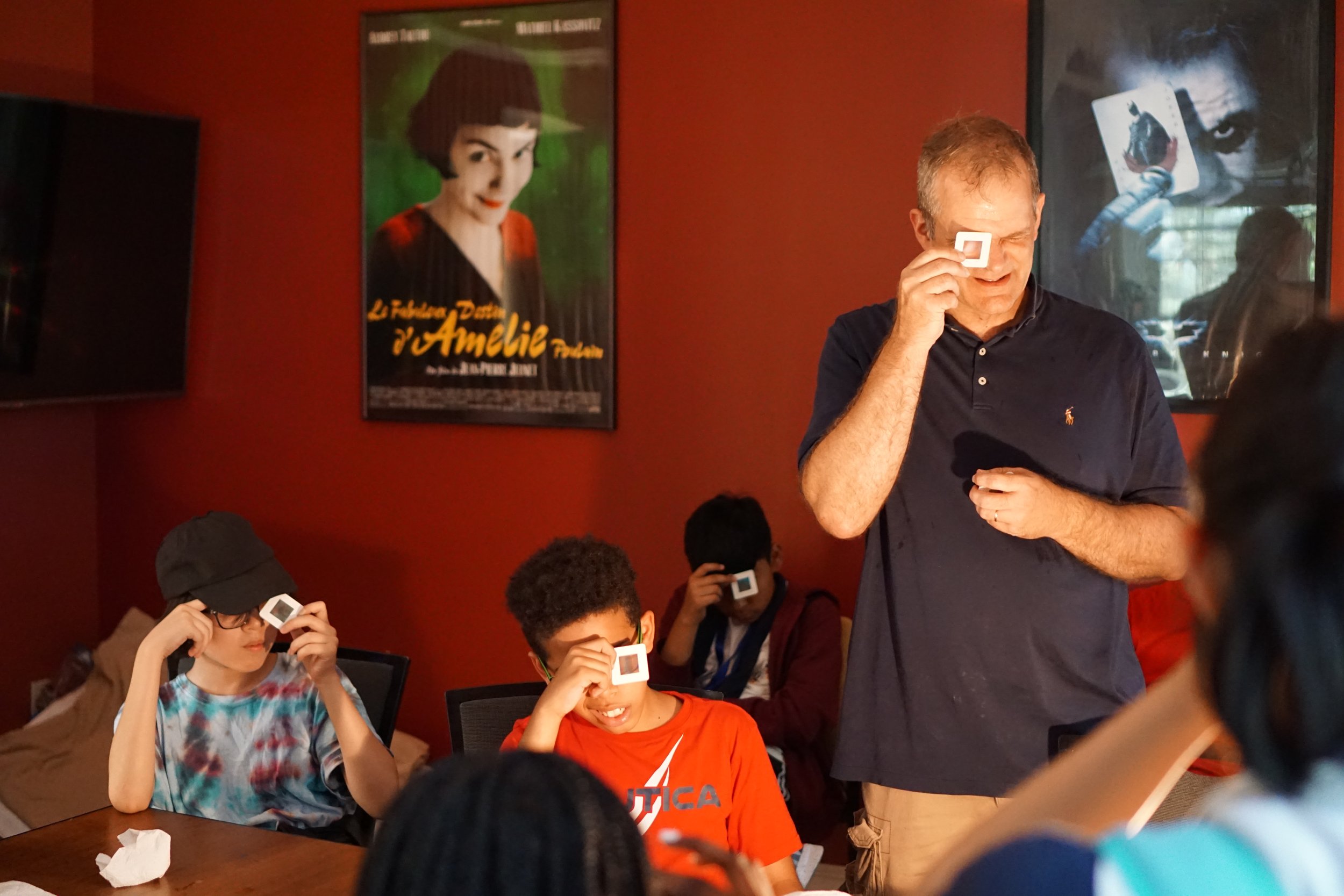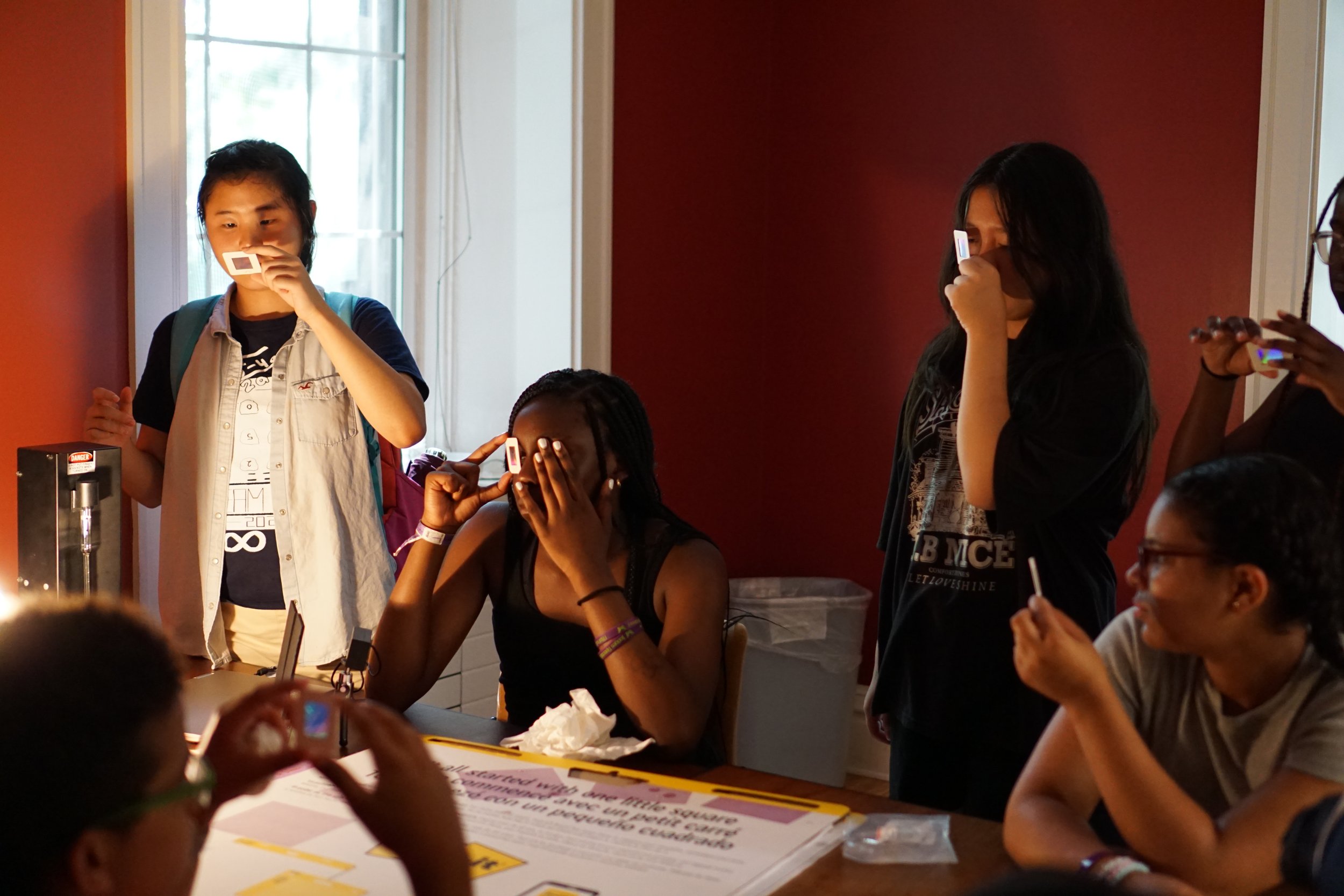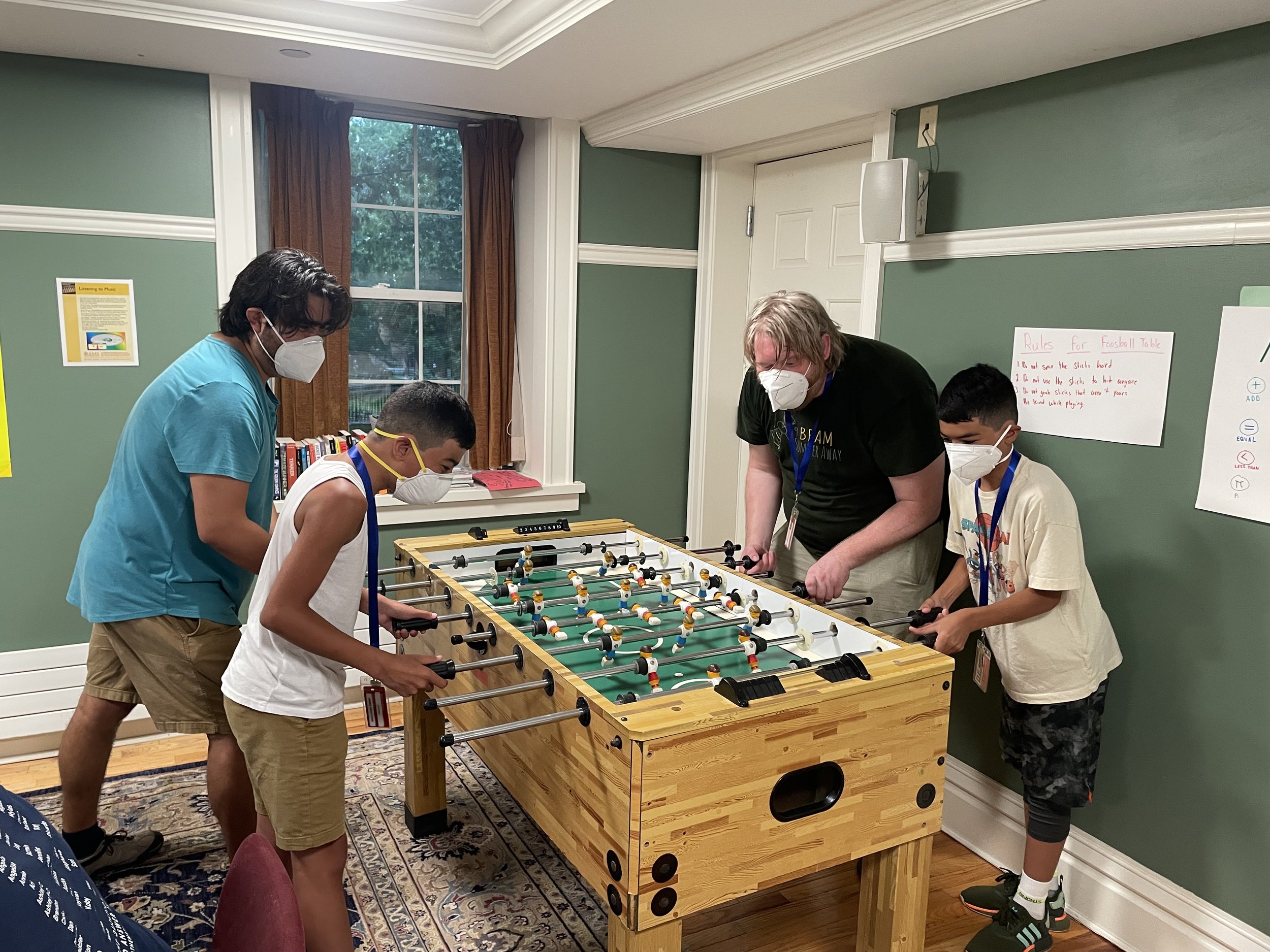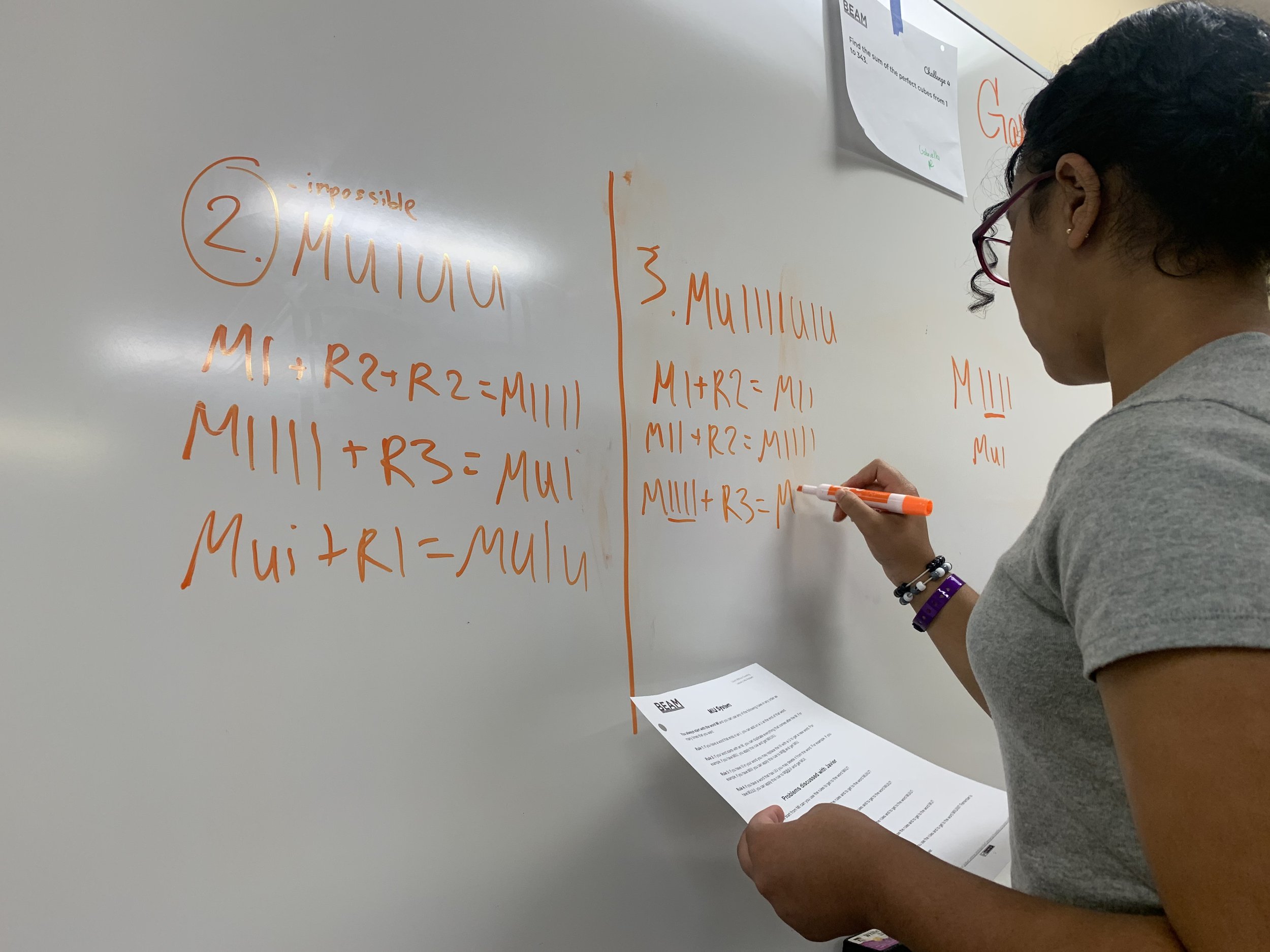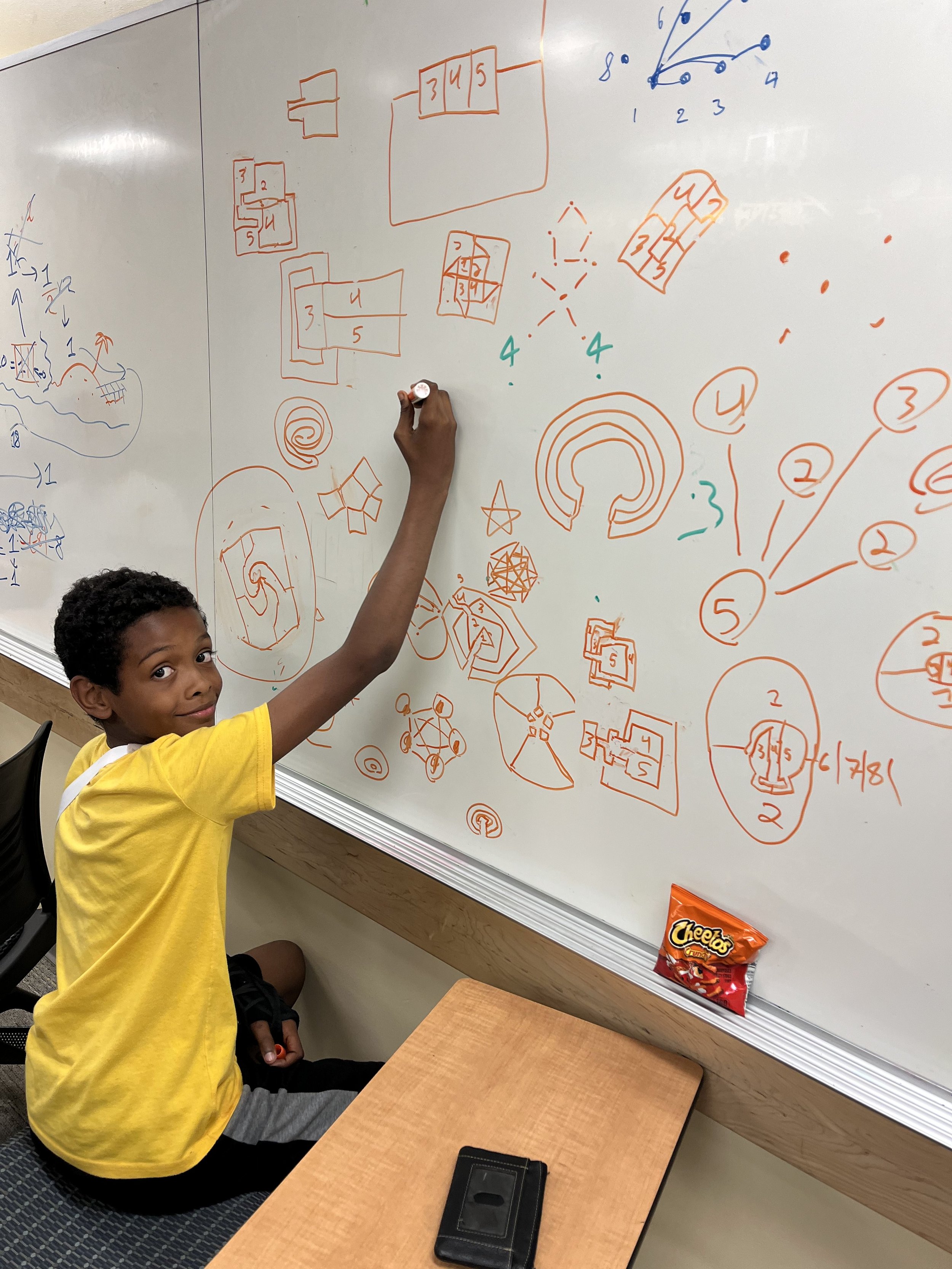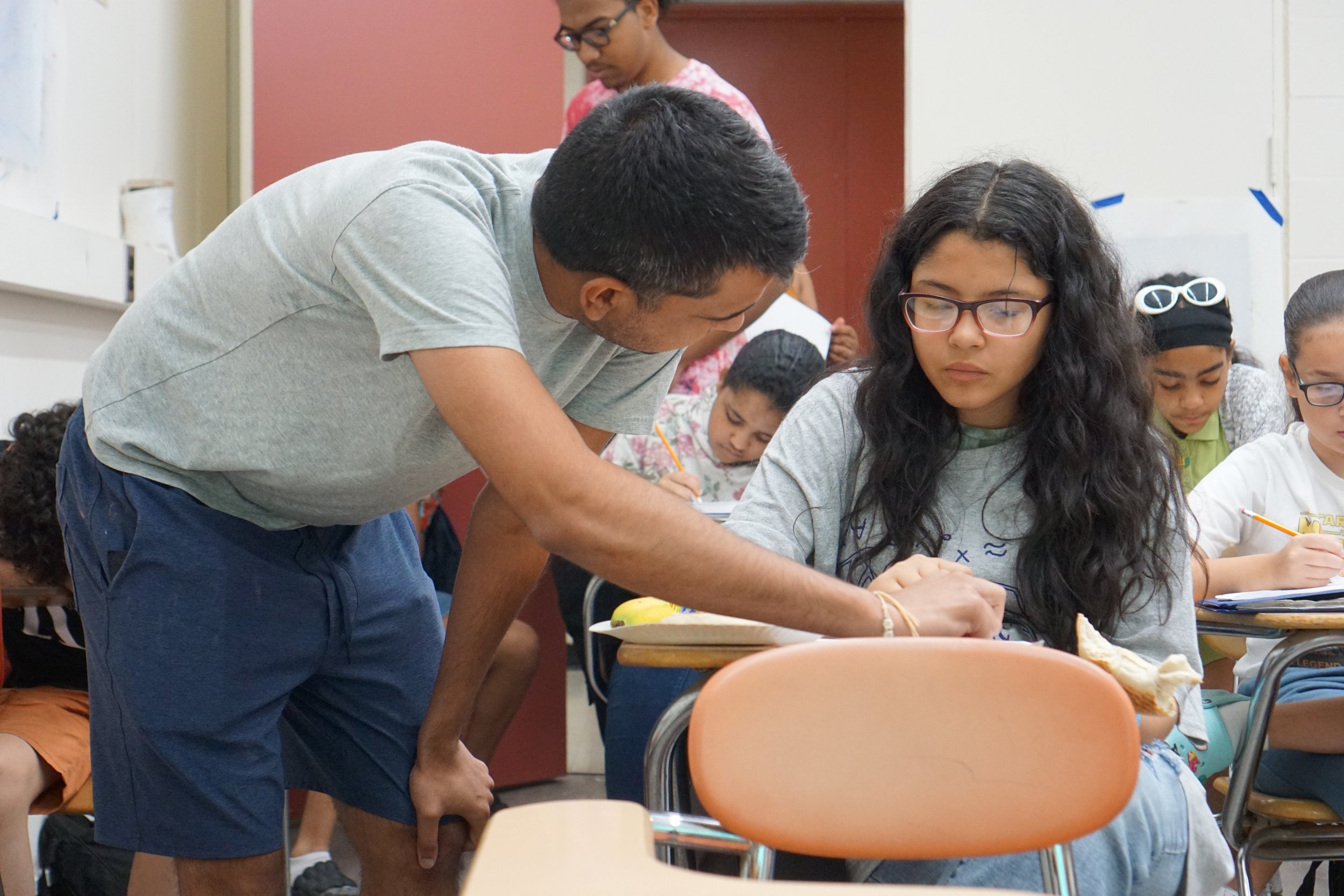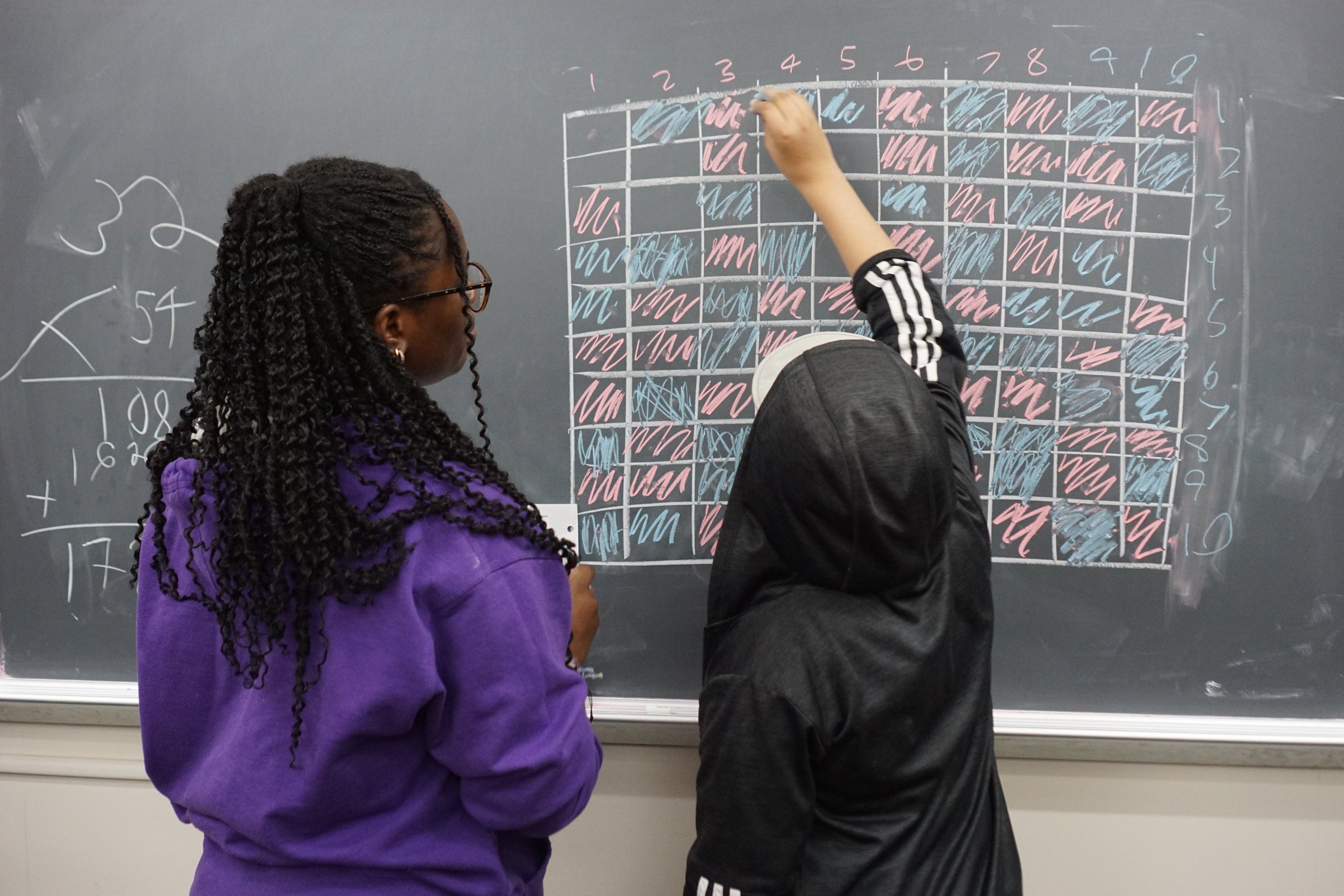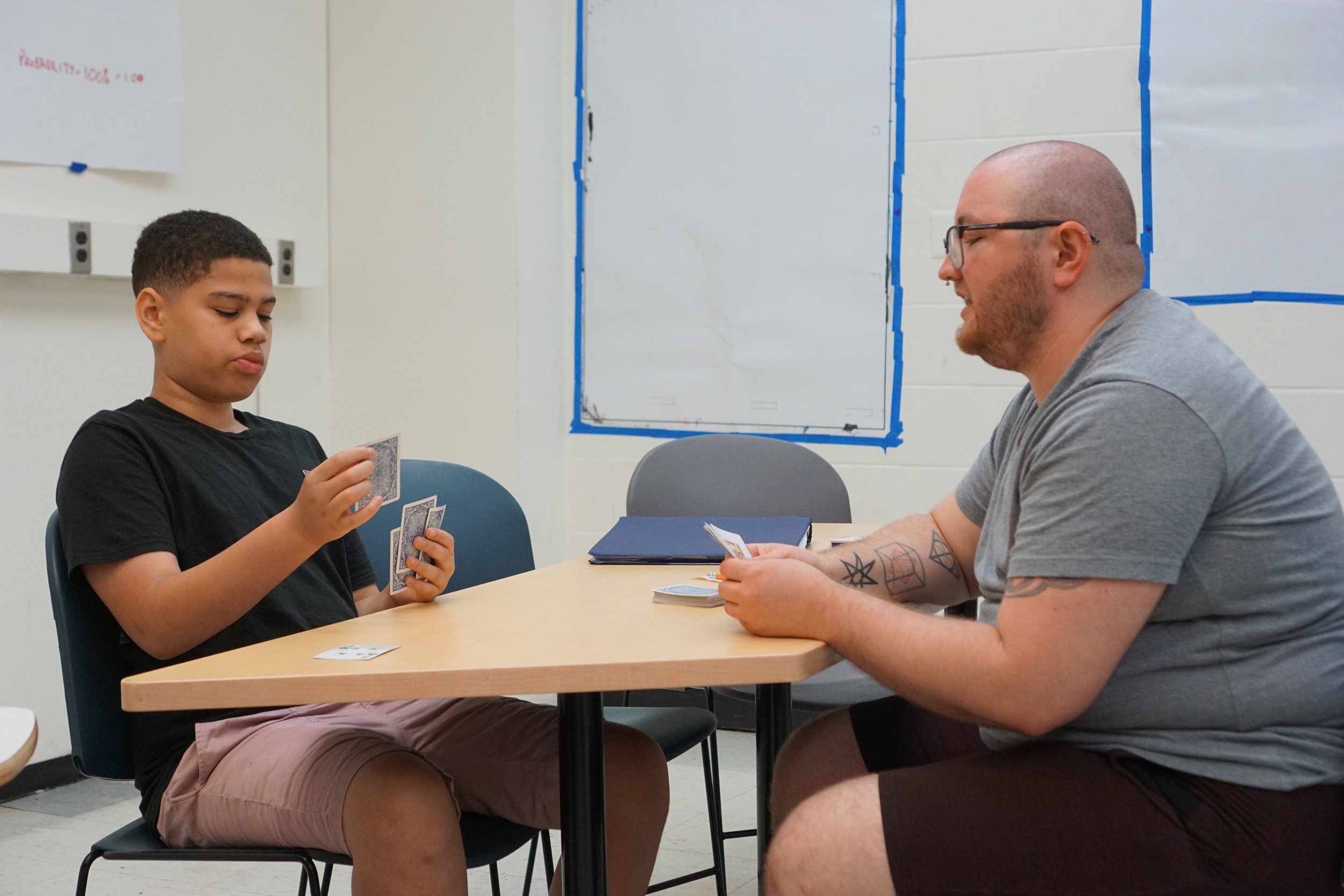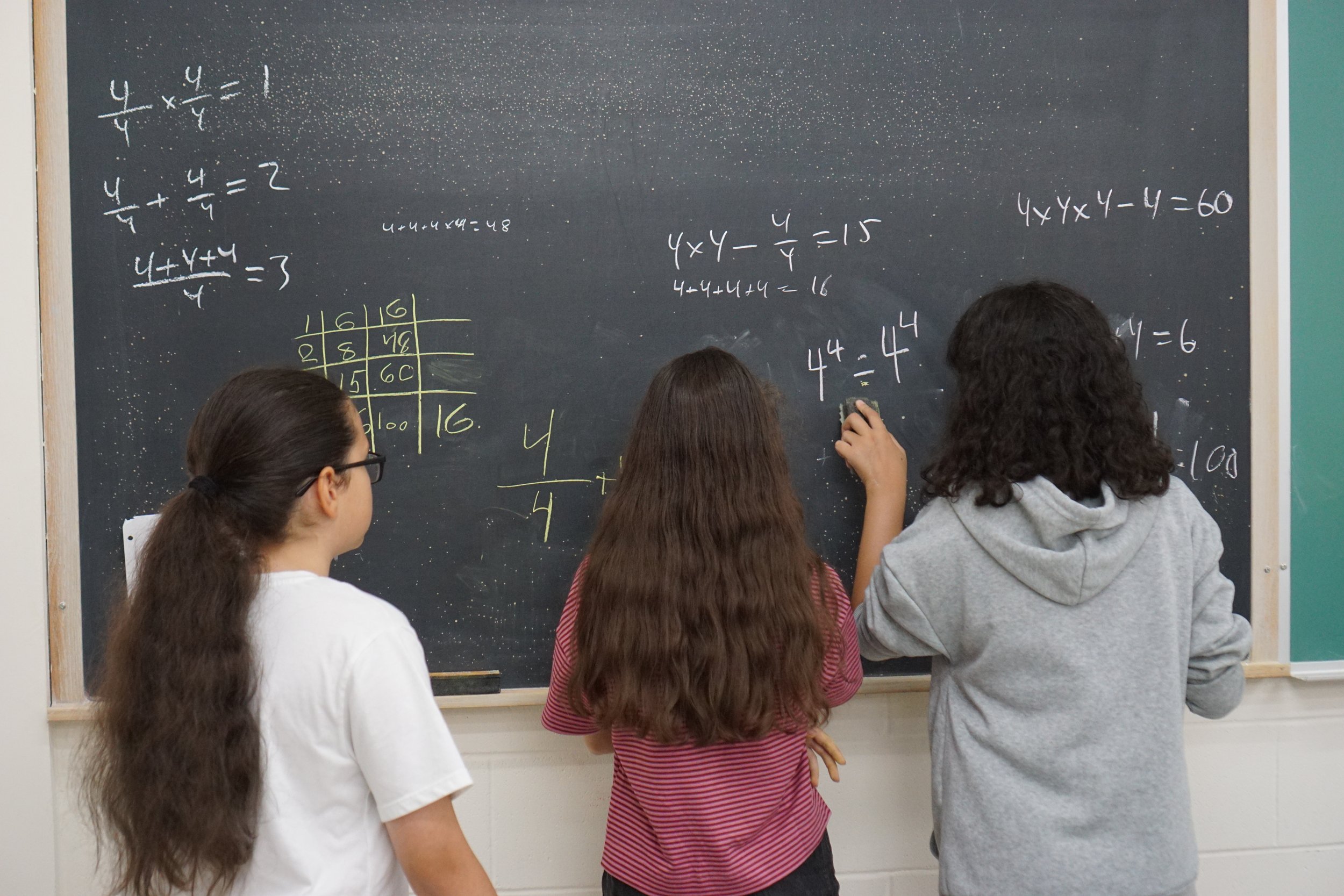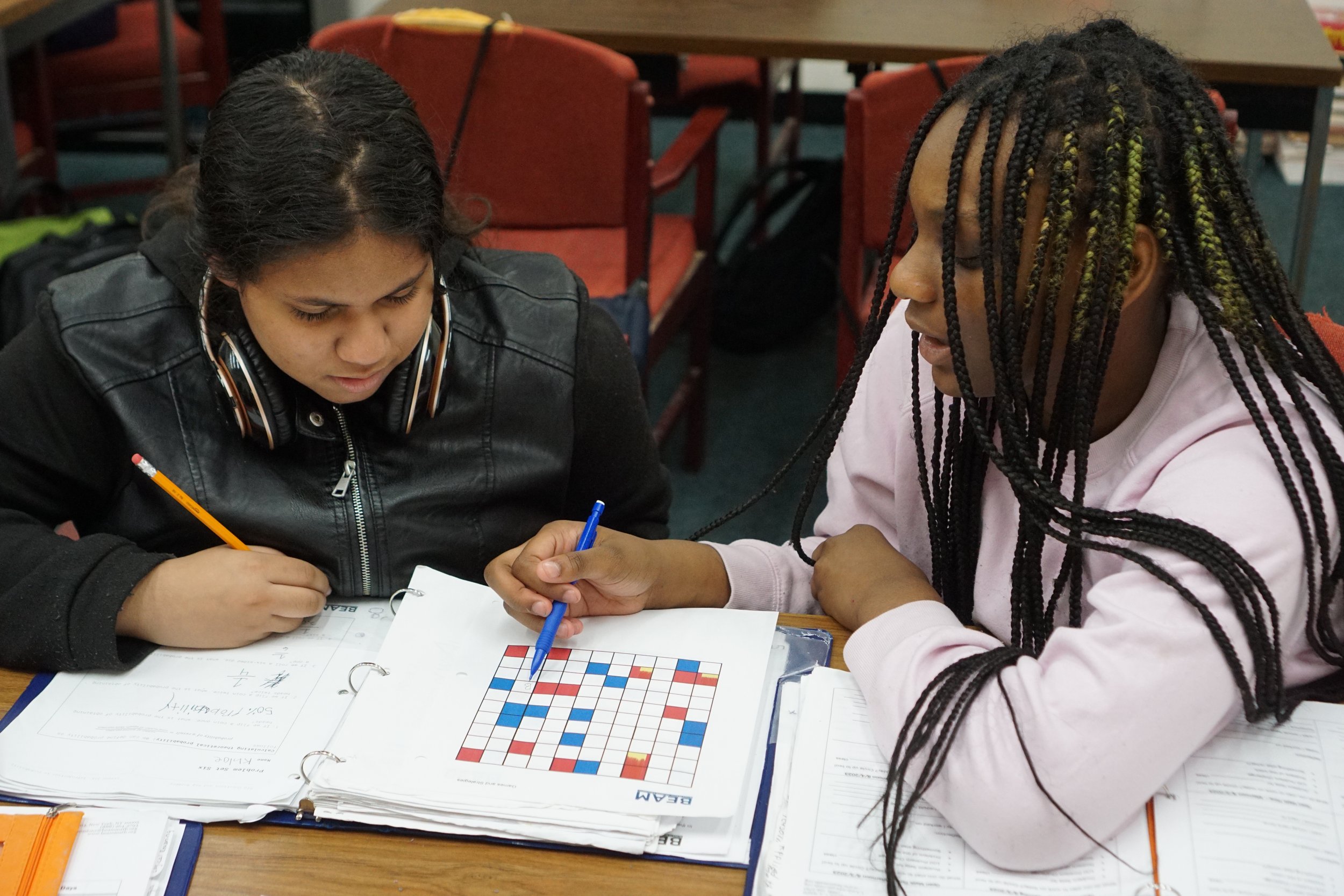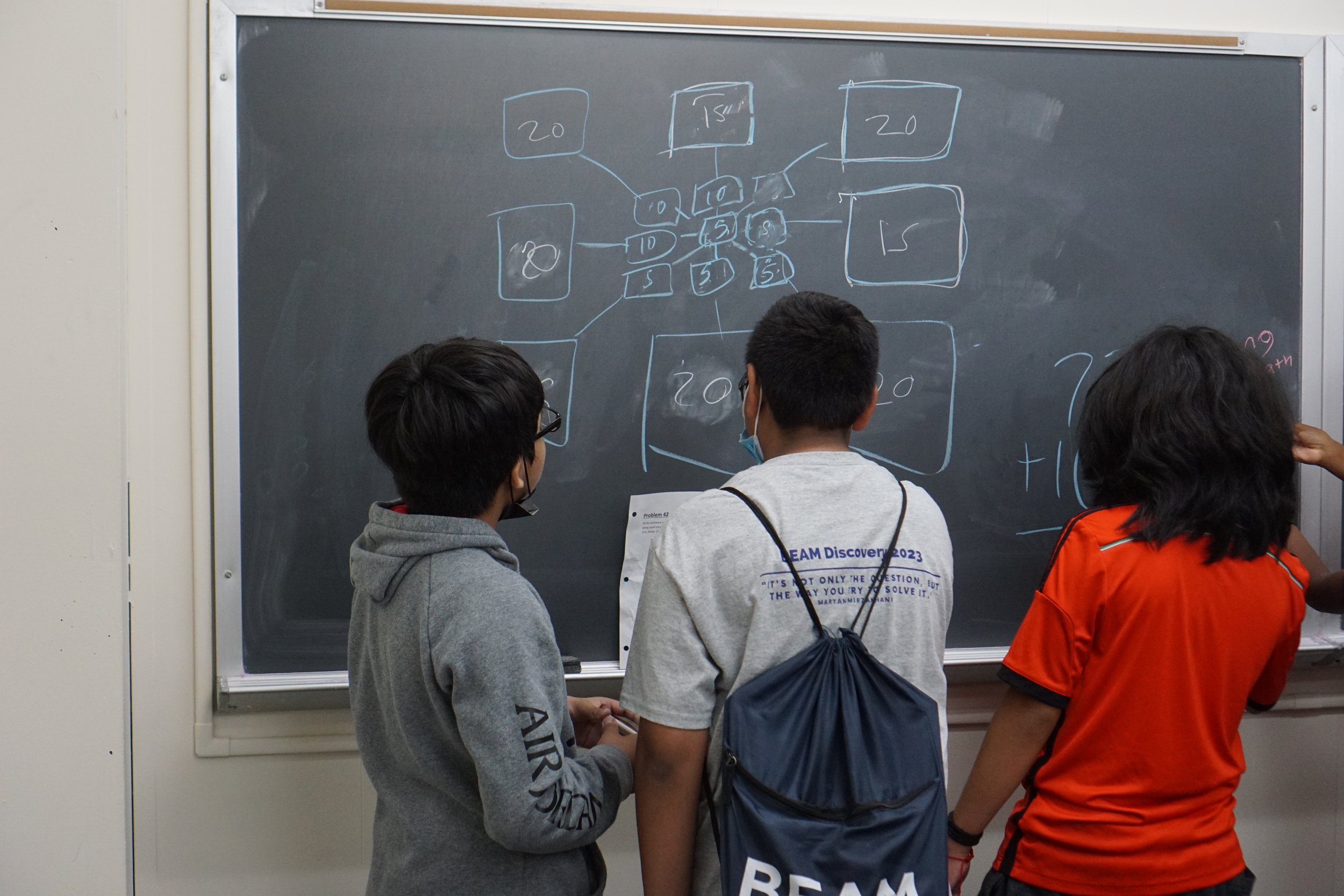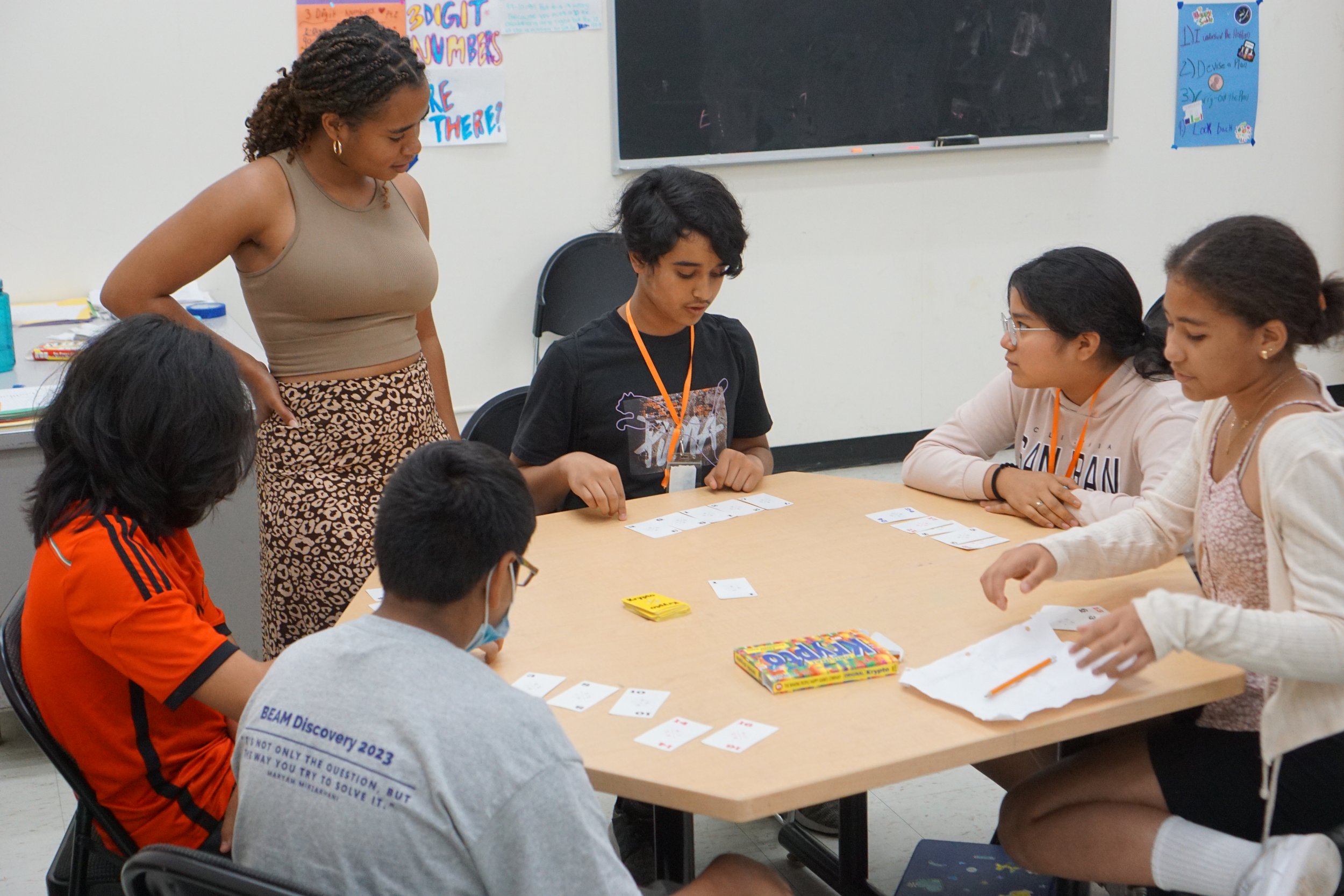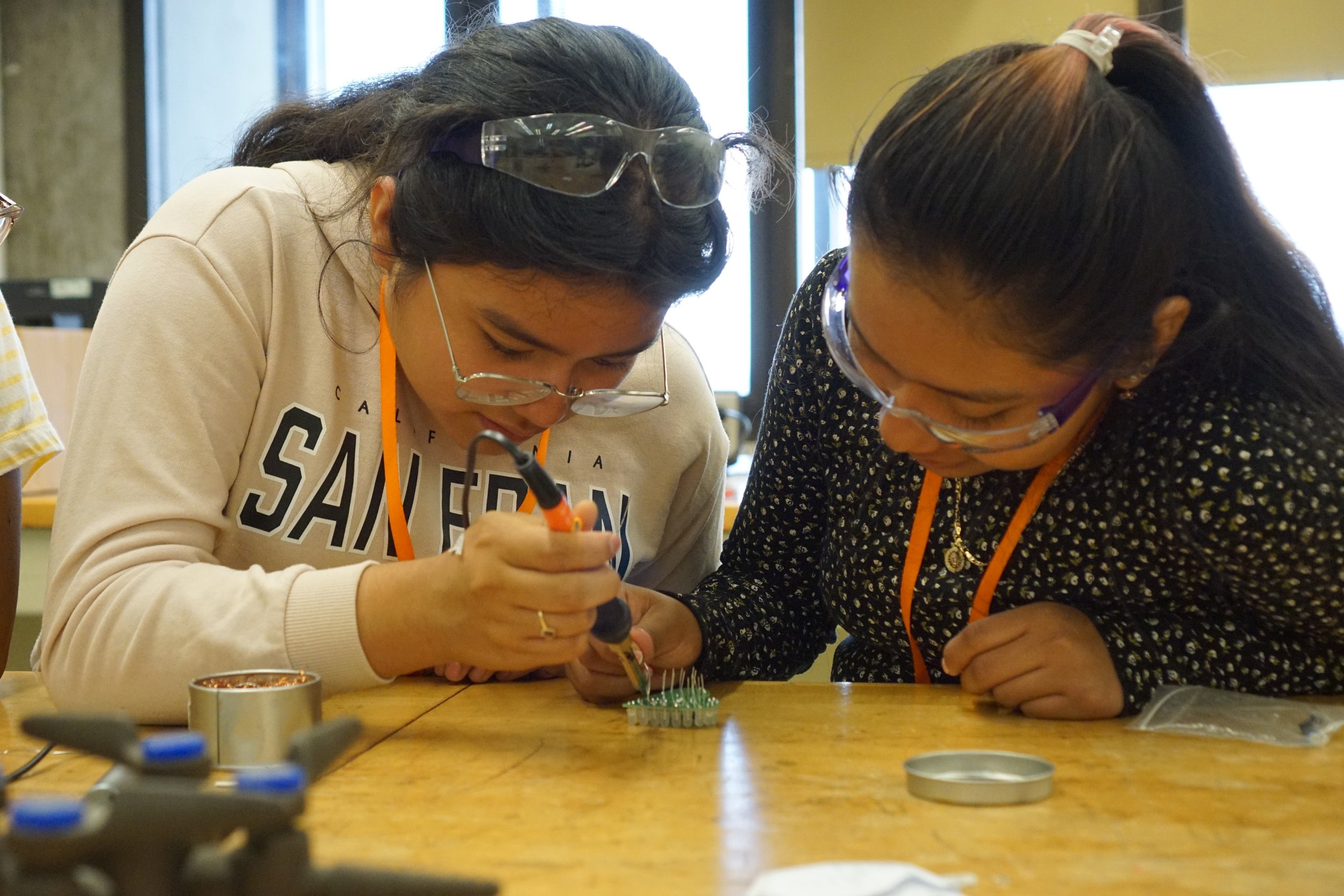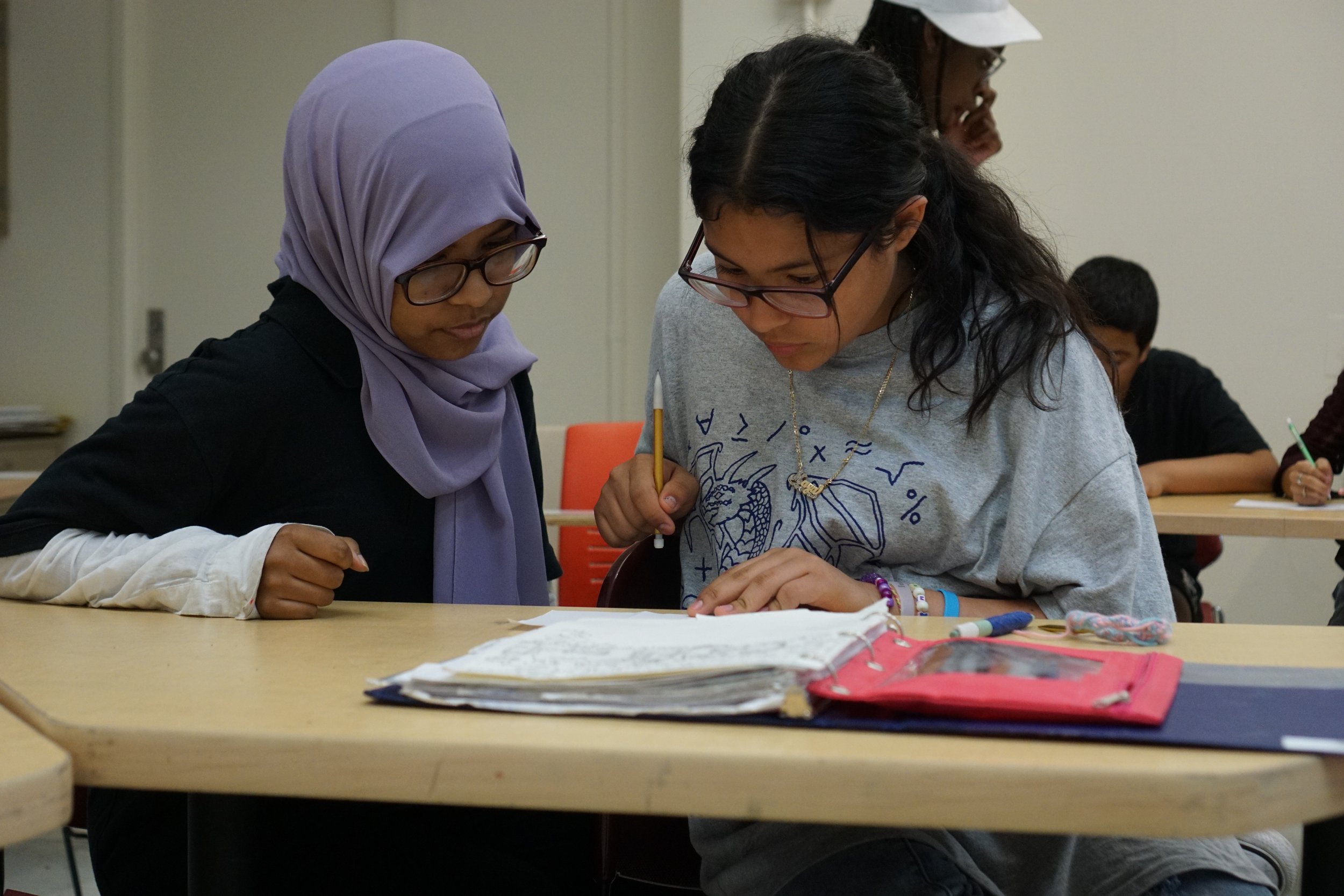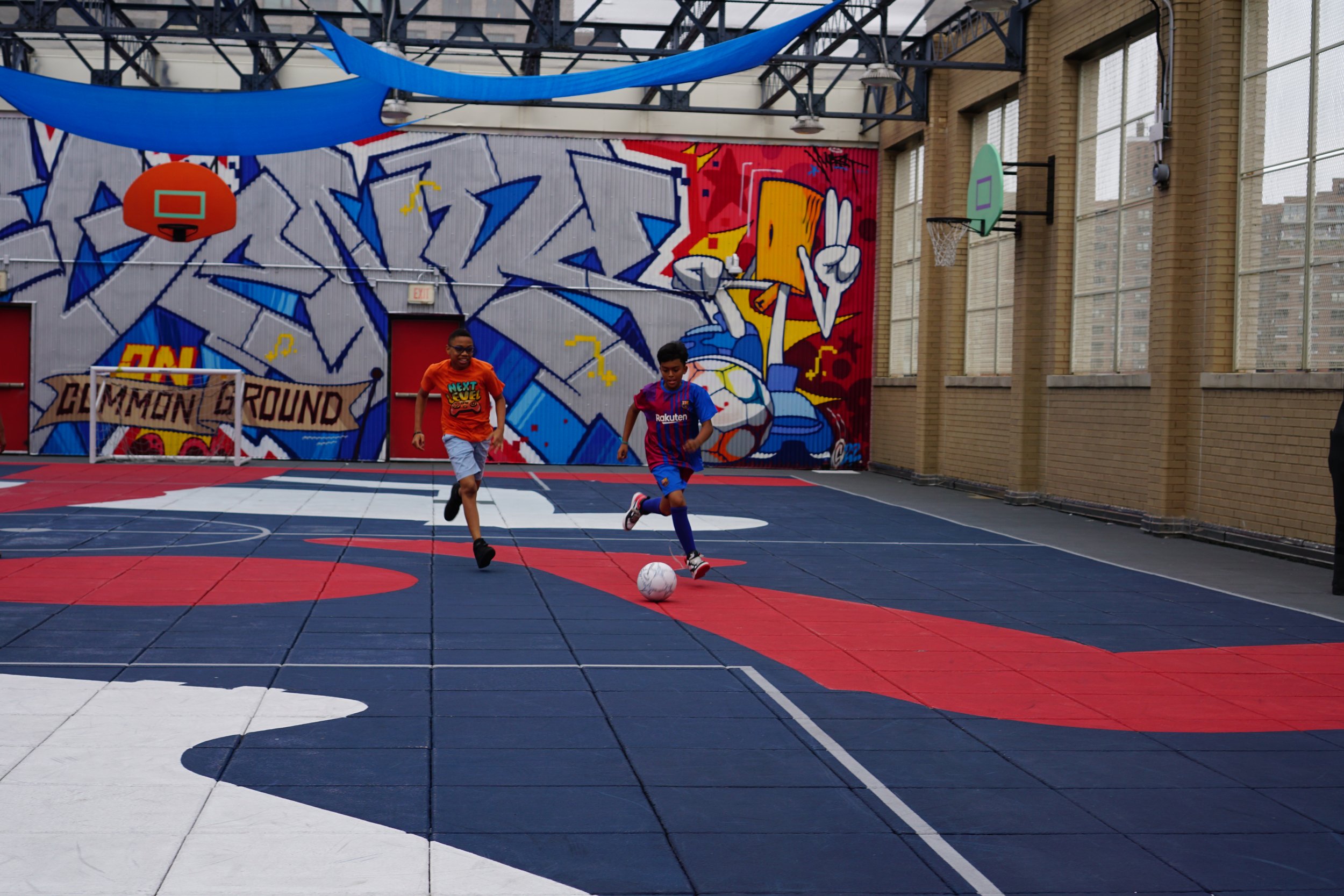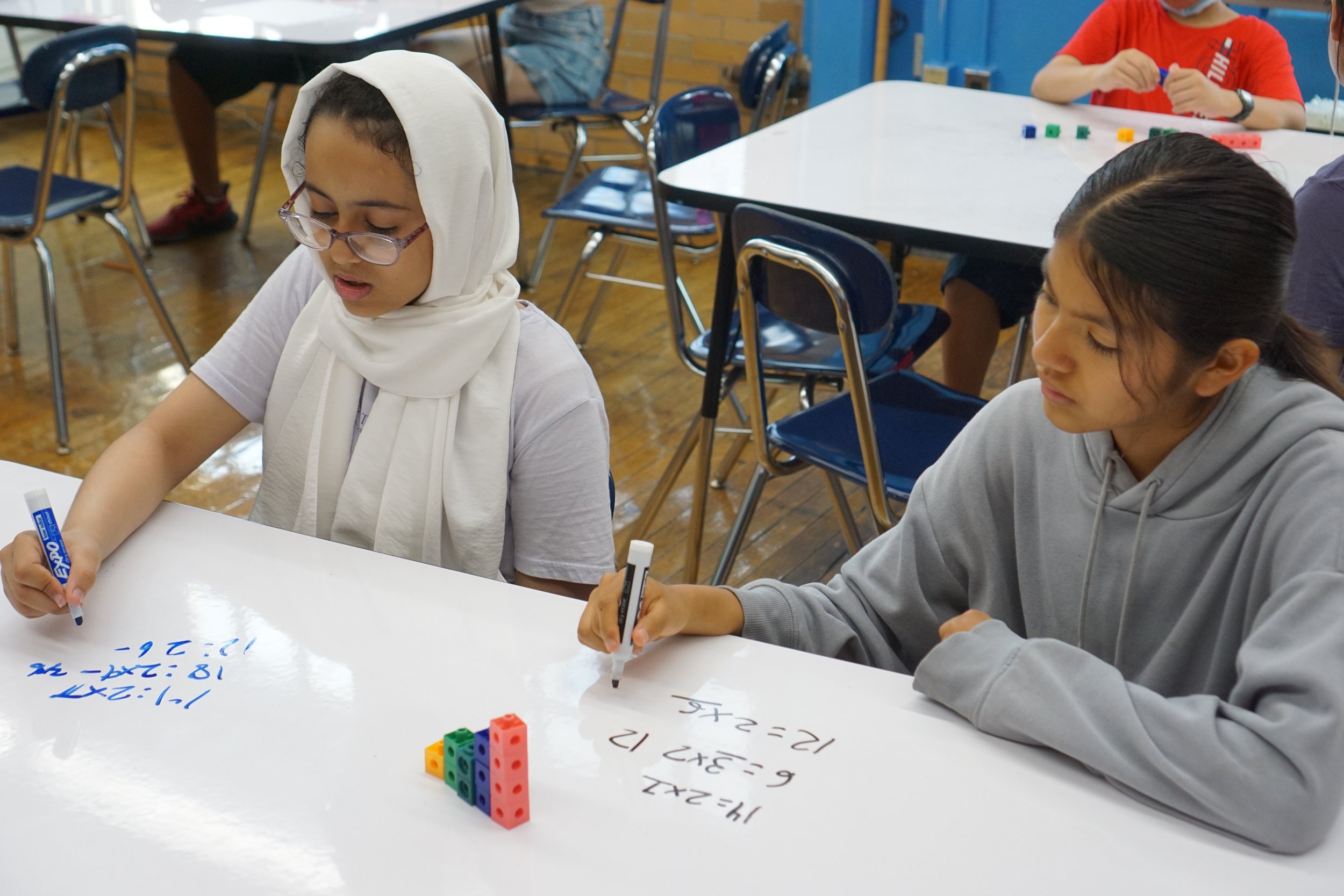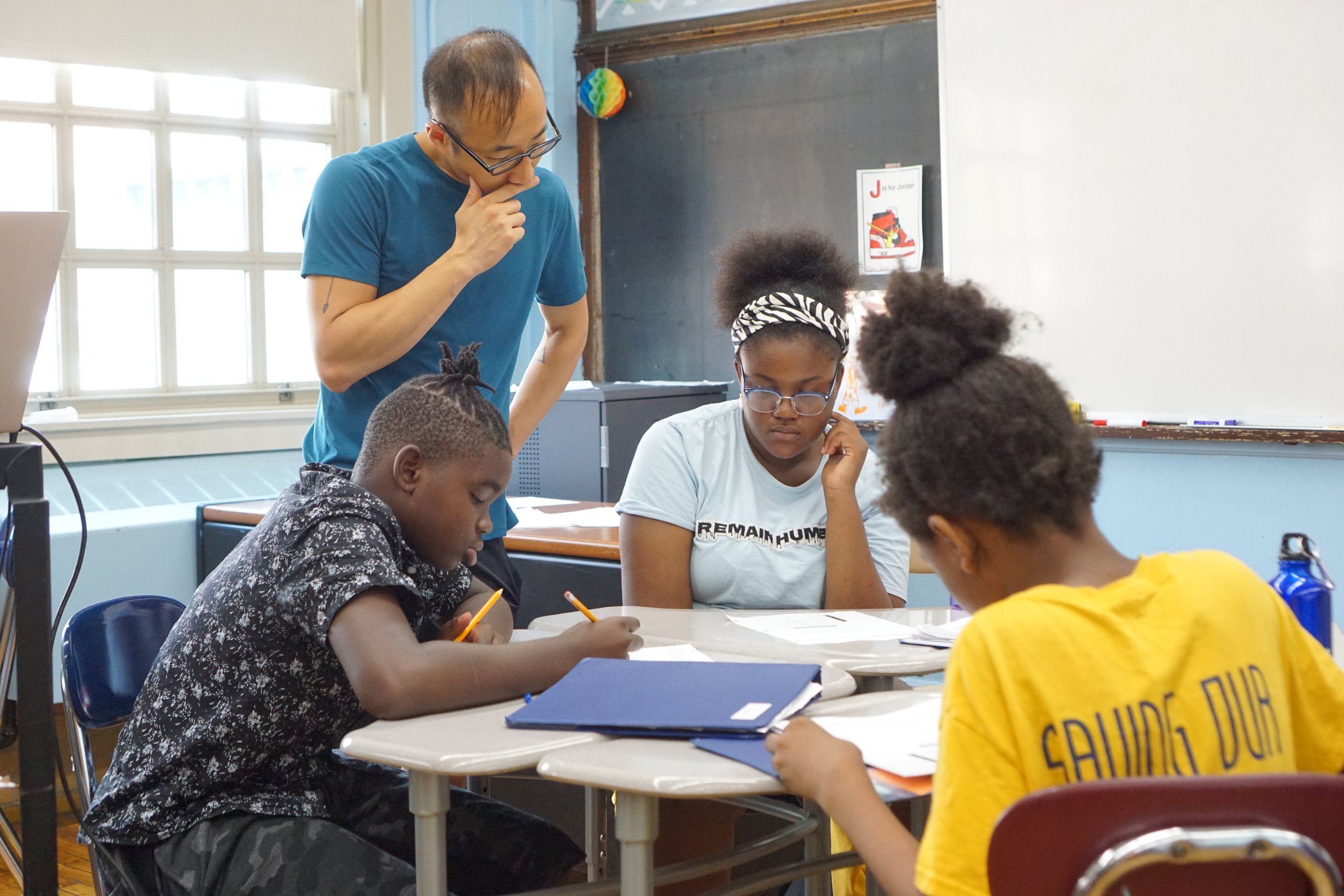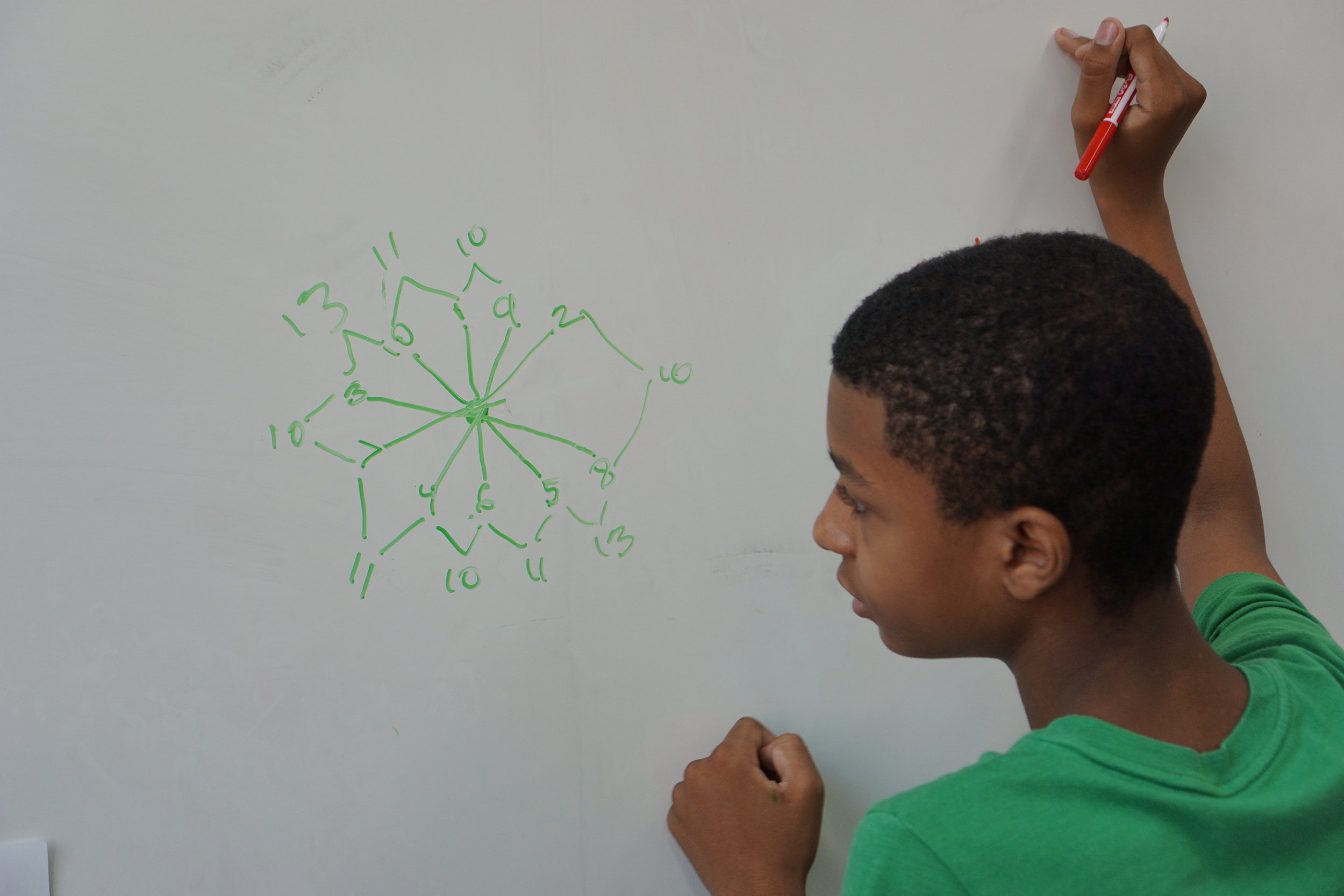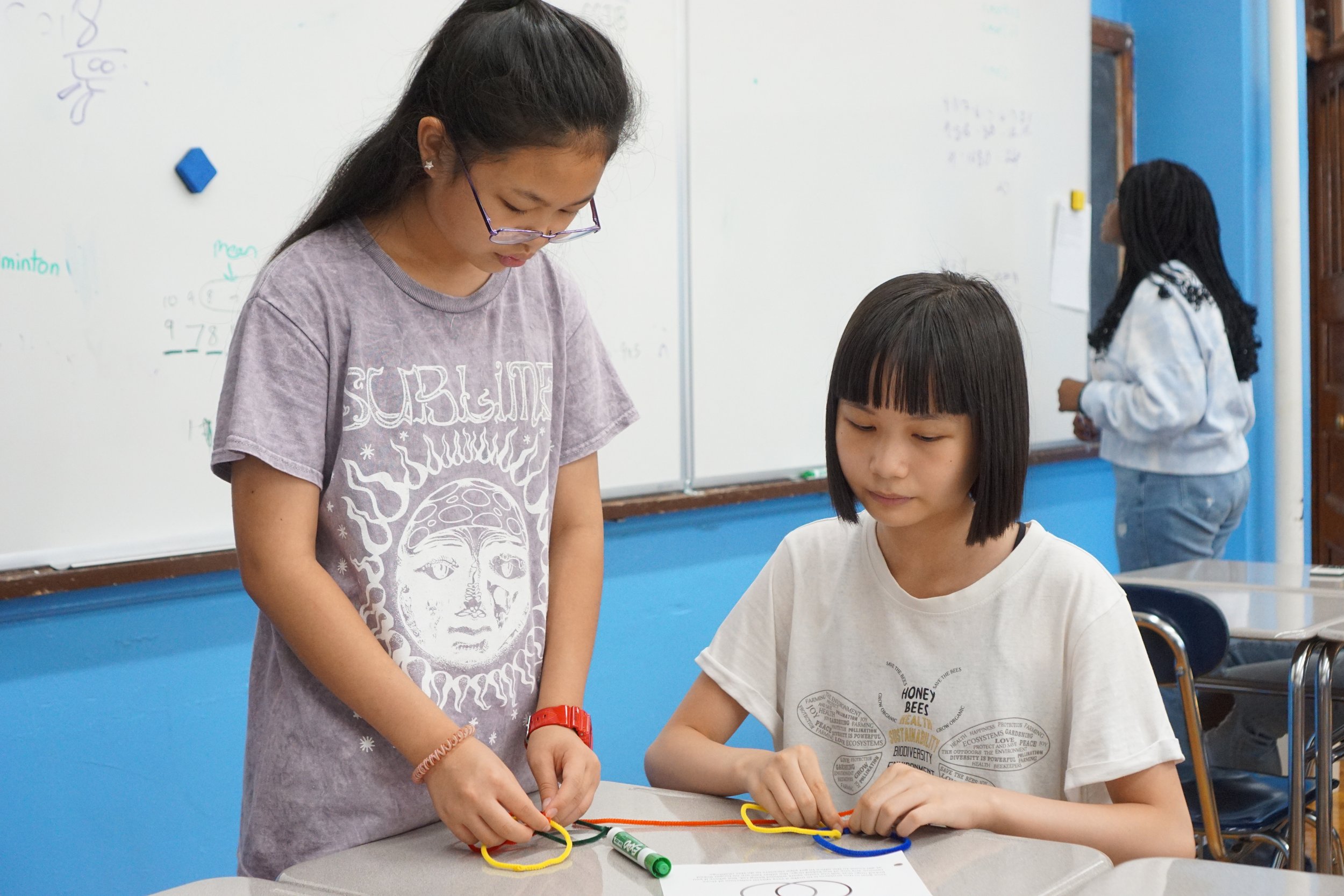Mathematical Wins
At Summer Away (our program for rising 8th graders), students were exceptionally engaged both inside and outside the classroom. In particular, they spent many hours outside of instruction time solving Challenge Problems, weekly problems beyond their daily coursework completed in teams or on their own.
Want to try out a challenge problem for yourself? Here’s Oscar and Yanny’s favorite: “What is the digit sum of the product of the 94-digit number consisting of all 9’s and the 94-digit number consisting of all 4’s?” Let us know what you think!
When we asked students, What’s the longest time you spent working on a single problem this summer, the median response of students at Summer Away, Pepperdine, was 48 hours — hats off to their perseverance! The median student at this site also grew an incredible 22% in national ranking on a national math contest (which we use to measure problem-solving growth) over the course of the summer. We consider 10% growth a “great” result, so this was truly exceptional.
This summer at BEAM Discovery (our program for rising 7th graders) in New York City and Los Angeles, students eagerly tackled the 100 Problem Challenge (100 difficult, puzzle-like math problems that involve teamwork, pattern-finding, and strategy). Students at all three sites completed all the problems, earning an ice cream field trip! Consider this problem from the 100 Challenge: Fill in each of the hexagons (at right) with a positive integer so that the number in each hexagon is equal to the smallest positive integer that does not appear in any of the hexagons that touch it.
Learn more about the puzzle and its solution here.
When asked what she would tell another student about BEAM, Alice T said “I’ve never been this excited to do math, especially the 100 Problem Challenge.”
A New Course
How do mathematicians know that a particular fact is true? For example, how do we know for certain that there are infinitely many prime numbers? It's because we found a proof of that fact: starting from the basics of math, we built out logical reasons for why there must be infinitely many primes. Proofs can be beautiful and elegant, but they also form the underpinning of math, and for students they're a great step to develop rigorous thinking and to work more like a mathematician.
How, then, can we ensure that students develop the skills to create their own proofs? This past summer, at our Summer Away site at Union College, BEAM piloted a new Introduction to Proofs course developed and taught by BEAM’s Learning and Pedagogy Manager, Javier Ronquillo Rivera.
“One of the main goals of the courses at BEAM Summer Away is getting students to start owning the process of proving things mathematically. This involves not only understanding the content that the class is covering, but also developing some habits of mind (and naming them) that mathematicians use every day. For example, looking at patterns, making conjectures from those patterns, trying to find counterexamples, or trying to find ways of being certain that the pattern always holds,” said Javier. “We decided to run this pilot to ensure that every student has the opportunity to develop the habits of mind and to have a common language around them.”
In the second half of the week-long class, Javier introduced the class to the MU puzzle, created by Douglas Hofstadter (and presented in Godel, Escher, Bach). The puzzle contains the letters M, I, and U, which can be combined to produce strings of letters. The solver is asked to start with the string MI and transform it into the string MU using one of four rules in each step. (Spoiler alert: the puzzle can’t be solved. The rules and more here.)
Javier explained, “By introducing this puzzle before developing the tools to prove its impossibility, there were two things I hoped the students would understand and feel: The first one is understanding the subtle difference between knowing that a result is impossible versus having tried many ways of getting to that result and not being able to. In the MU puzzle — without having completely developed the tools needed to prove the impossibility — we fall in the space of saying: ‘Is it really impossible to get the MU word, or have we just not found a way to get there by using the rules we have?’ I call the students’ attention to that uncertainty to show that in order to avoid that feeling, we need proof. The second thing I hoped students would feel, while using the tools we had at that time, is the need for mathematical proof.”
The puzzle stuck with Zayden, who wrote, “Although ‘MU’ is impossible, I built a connection that taught me to see patterns in these problems that I never saw before.” Andrew also reflected, “[I] worked on this for a while…it was very interesting because there are so many ways to try to come up with a solution.”
Led by Javier, students discussed their own definitions of arithmetic properties like even, odd, and divisible. Students explored how utilizing slightly different definitions led to different results, and collaborated to create strong definitions that required abstraction. For example, taking the definition “An even number is divisible by 2” and strengthening it to “An integer n is even if and only if n is twice some integer.” With these strong definitions, they were able to answer a variety of questions about different integers, included in the video below!
Visit Javier’s class [10 minutes].
BEAM Pathway students mentor a new cohort of mathematicians
BEAM students gave back in a big way this summer — 38 BEAM high school and college students served as near-peer counselors and teaching assistants at Discovery and Summer Away, mentoring BEAM middle schoolers while gaining valuable (paid) work experience.
For the first time, BEAM students also held leadership positions at all of our New York summer sites, serving as the Directors of Student Life (DoSL) across these programs. It’s a big job — DoSLs are responsible for coordinating activities, managing counselors, communicating with parents, and more. At Union College, the Guidance Counselor – who supports students in their social growth while at BEAM – and Associate Site Director were also BEAM alumni!
We’re incredibly proud to see BEAM students step up as role models for our newest cohort of students.
BEAM’s Learning and Evaluation team charts success!
The Learning & Evaluation Team at BEAM not only helps us demonstrate our impact, but also drives improvement across BEAM. Established two years ago, the team has brought new rigor to the evaluation of our work, which is, in turn, shaping how we design and implement our programs.
This summer for the first time, the L&E Team measured student growth in six areas that research has shown to be predictive of students’ future STEM success, and that are central to our work:
Math appreciation
Sense of community with BEAM
Growth mindset
Math-specific perseverance
Math self-efficacy
Math enjoyment
Students at both Summer Away and Discovery showed statistically significant growth in all six areas, with large effect size — which means we can attribute the effect to BEAM’s programs. (For all you nerds, we promised we’d get there, so thanks for hanging in.)
We’re incredibly excited by the strong results — and by everything our L&E Team is doing to make our work more effective.
For more information about BEAM’s 10 year vision for supporting our students’ STEM dreams, please read our strategic plan.
Quotable Quotes
We could write so much more about this summer, but our students say it best:
“BEAM wasn't just about math, I did learn new things but I was able to make connections with people and learn how some problems [have] a key to solve them.” -Lauren M, Los Angeles
“I grew a lot in BEAM. I think I became more independent and mature. I also made friends and the activities are fun.” - Desani M, New York City
“BEAM is a very interactive and rewarding program. It manages to make math feel like a sort of reward.” - Brian R, New York City
